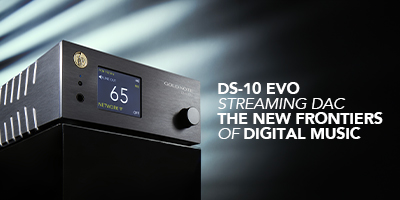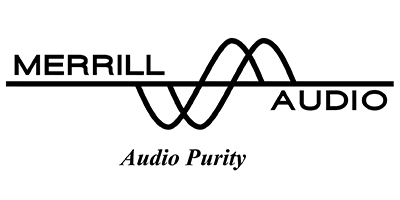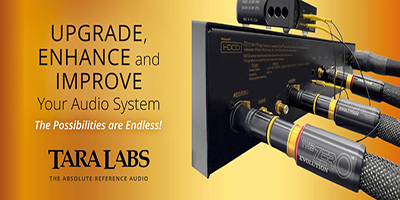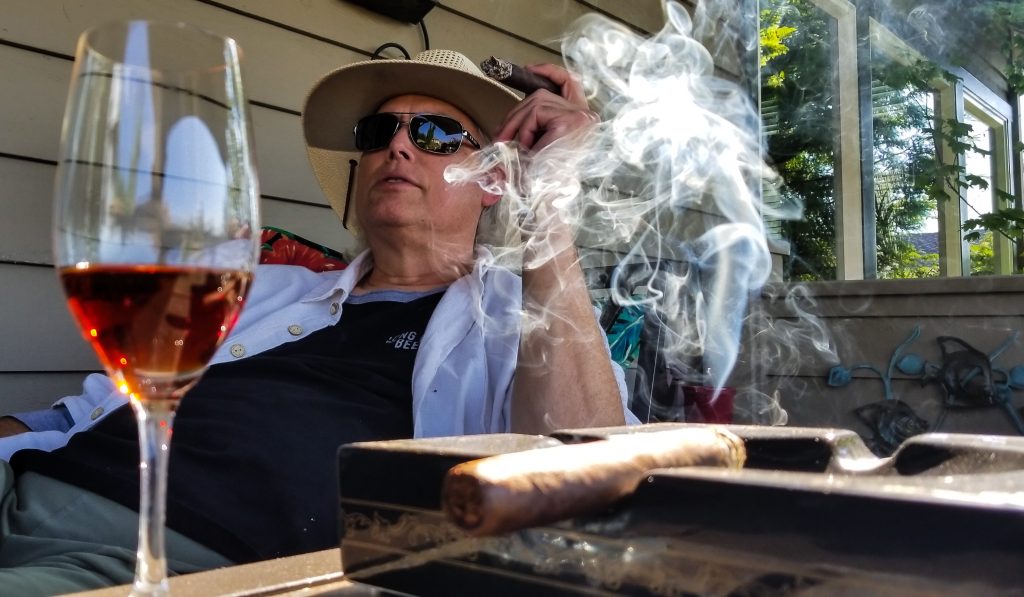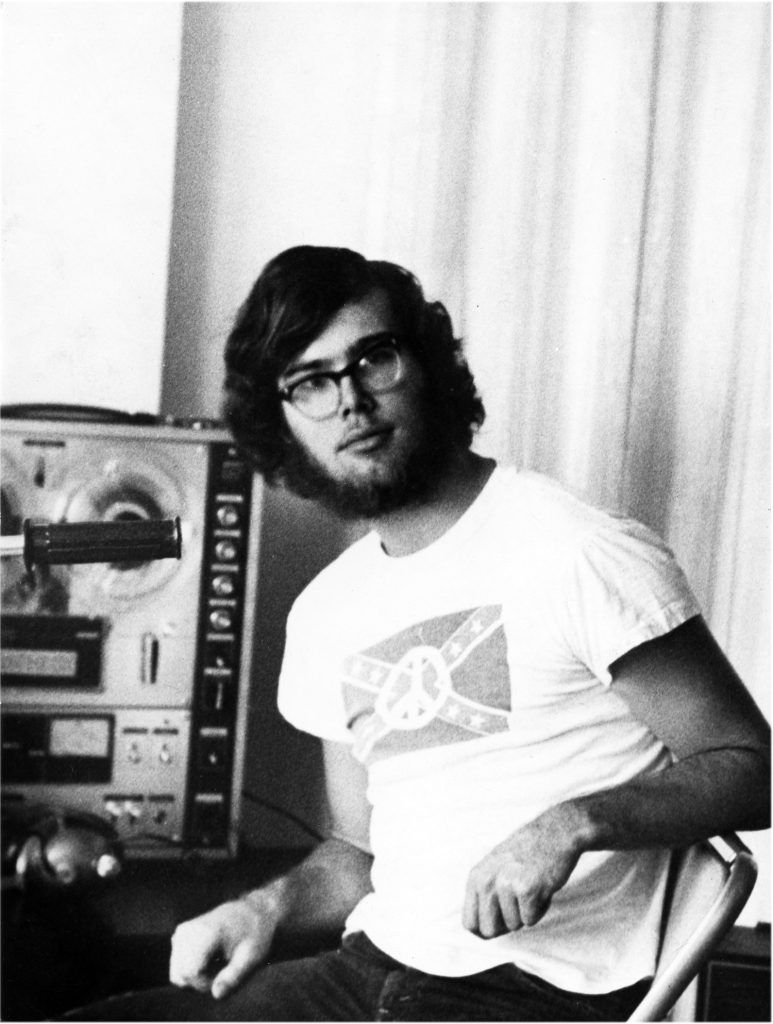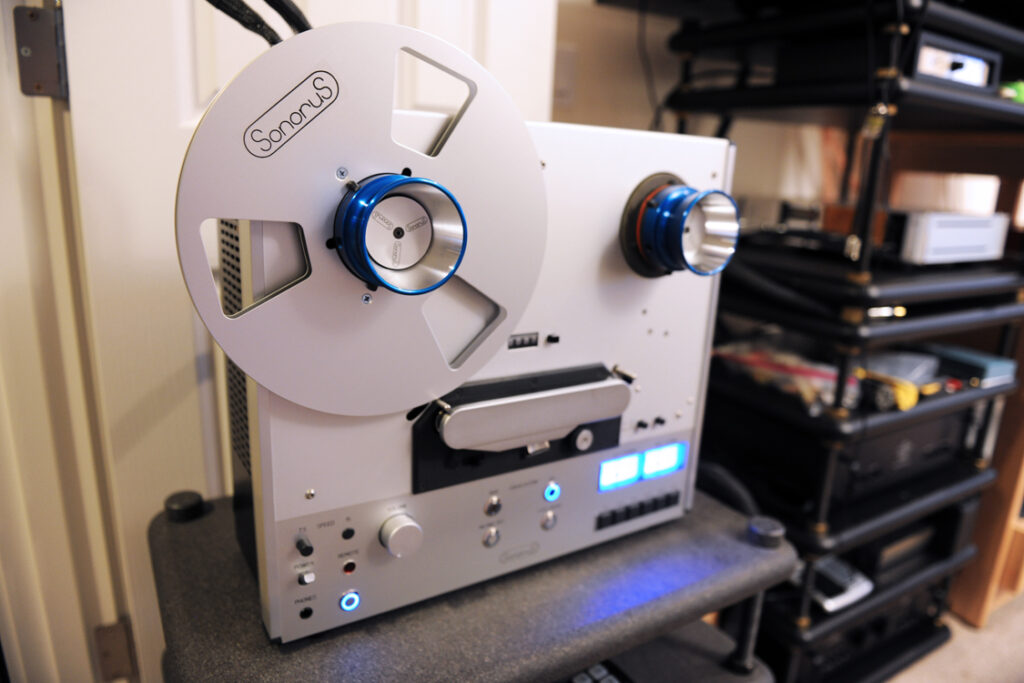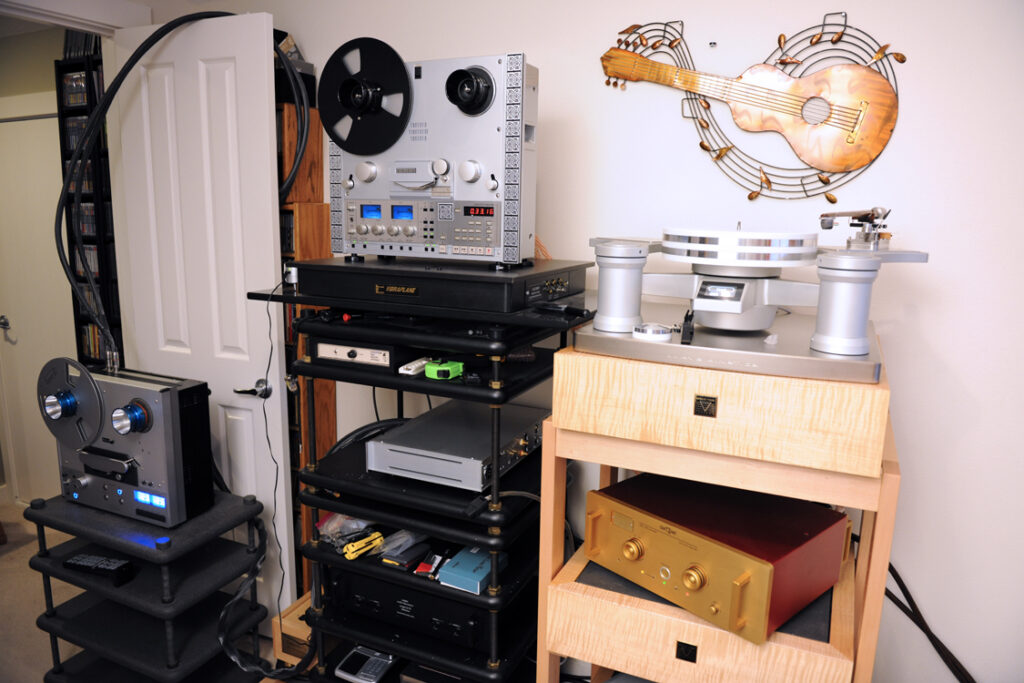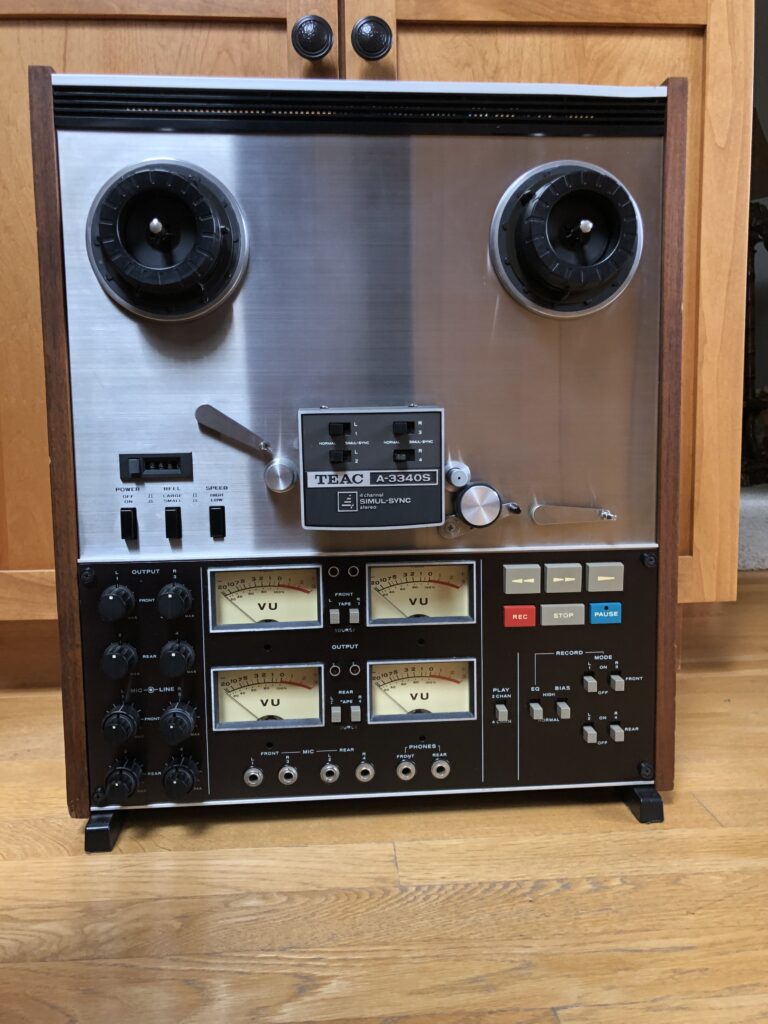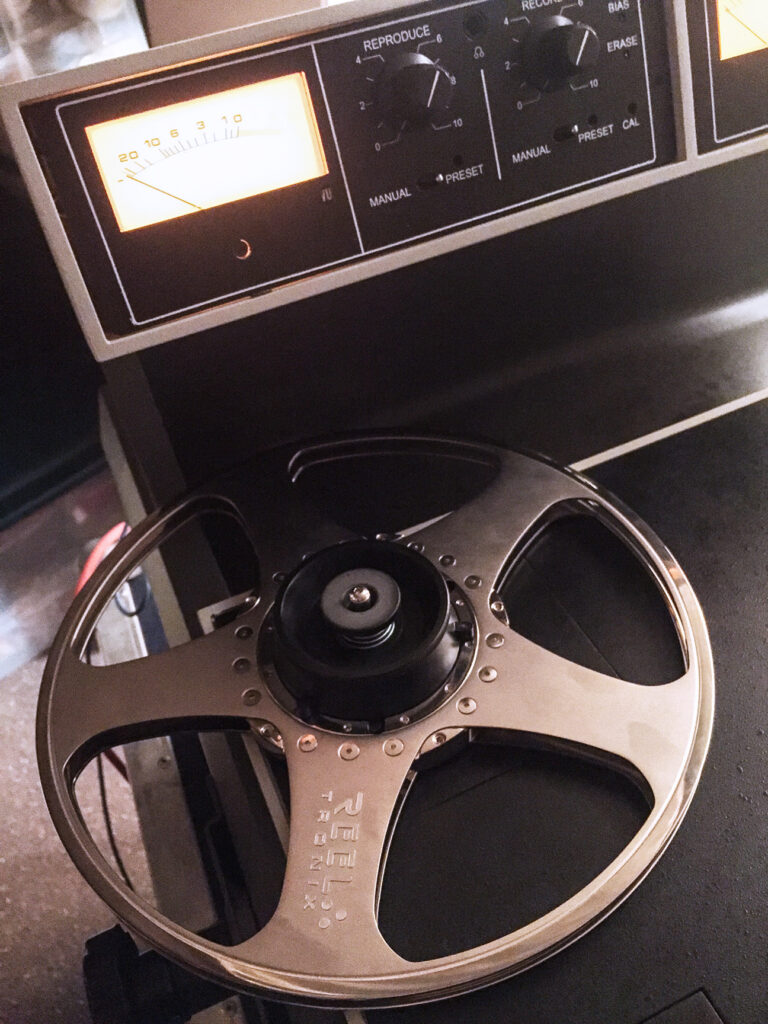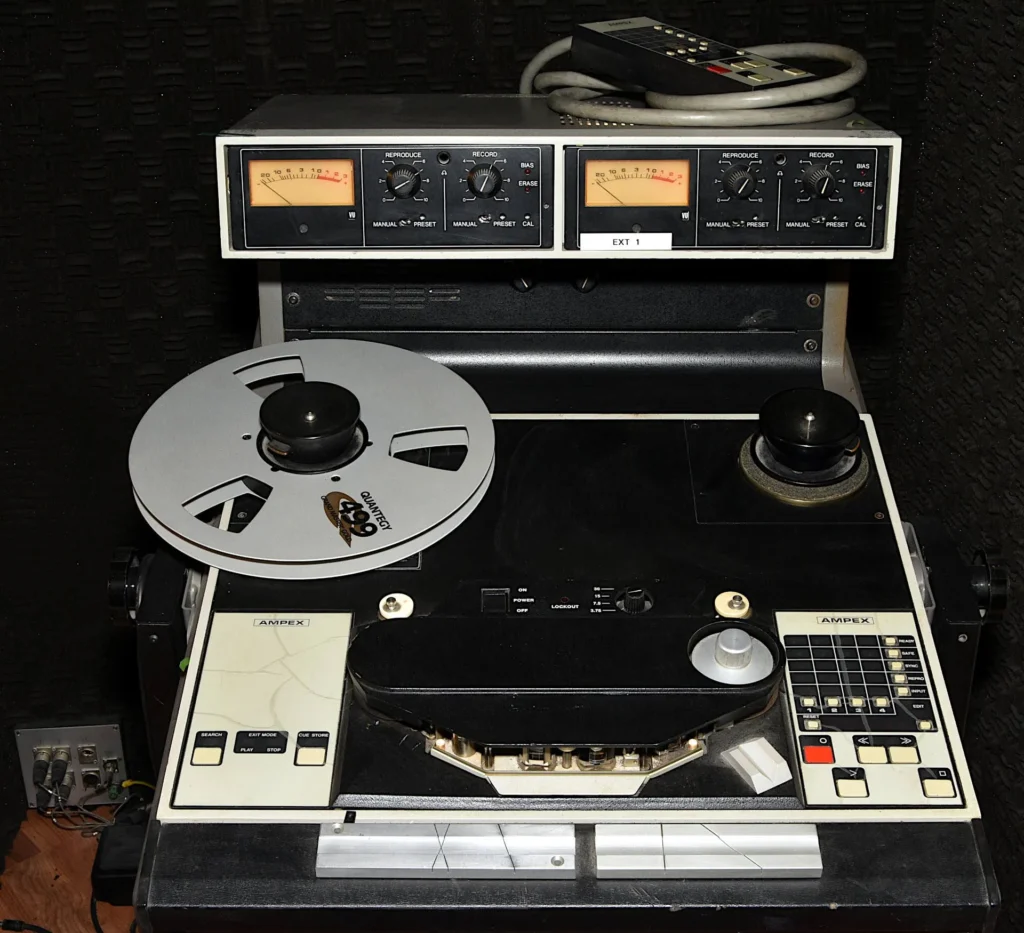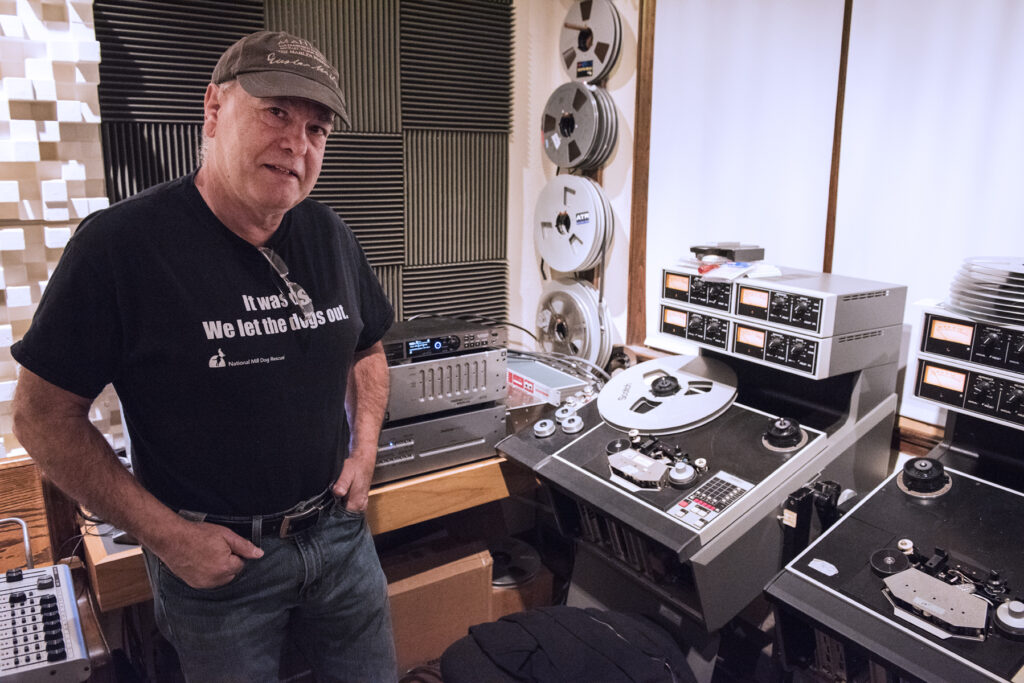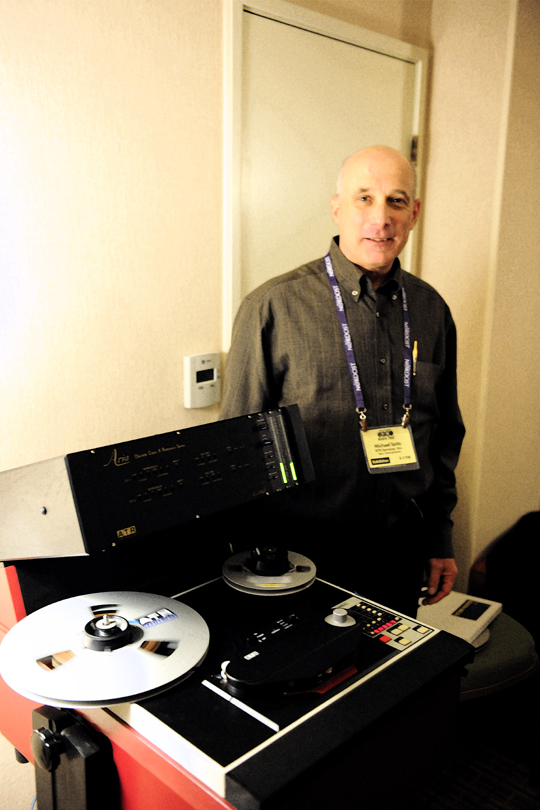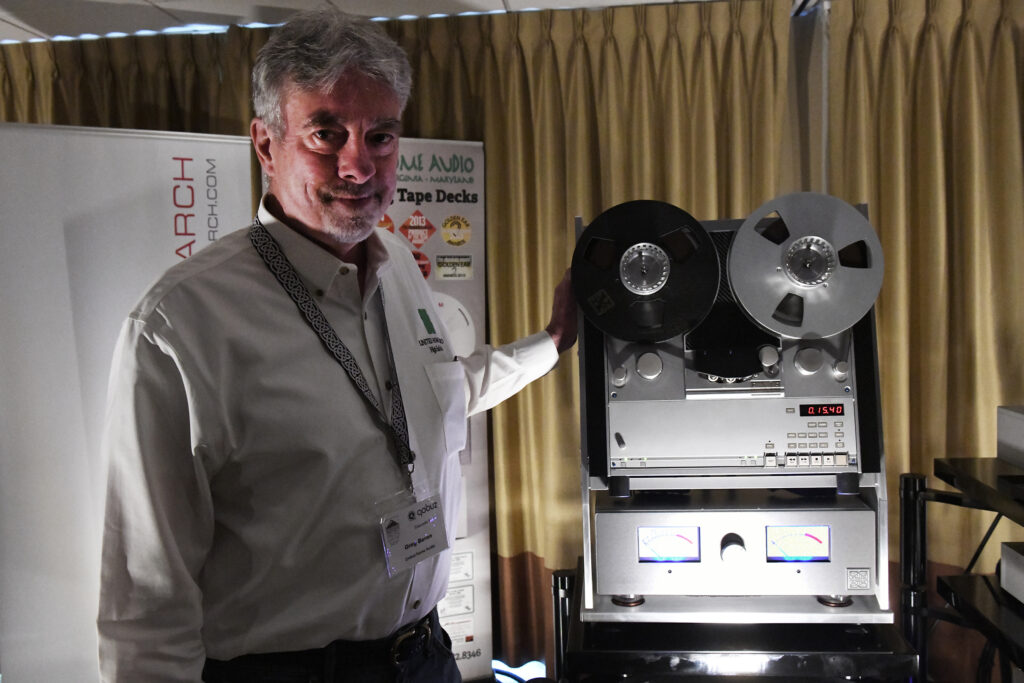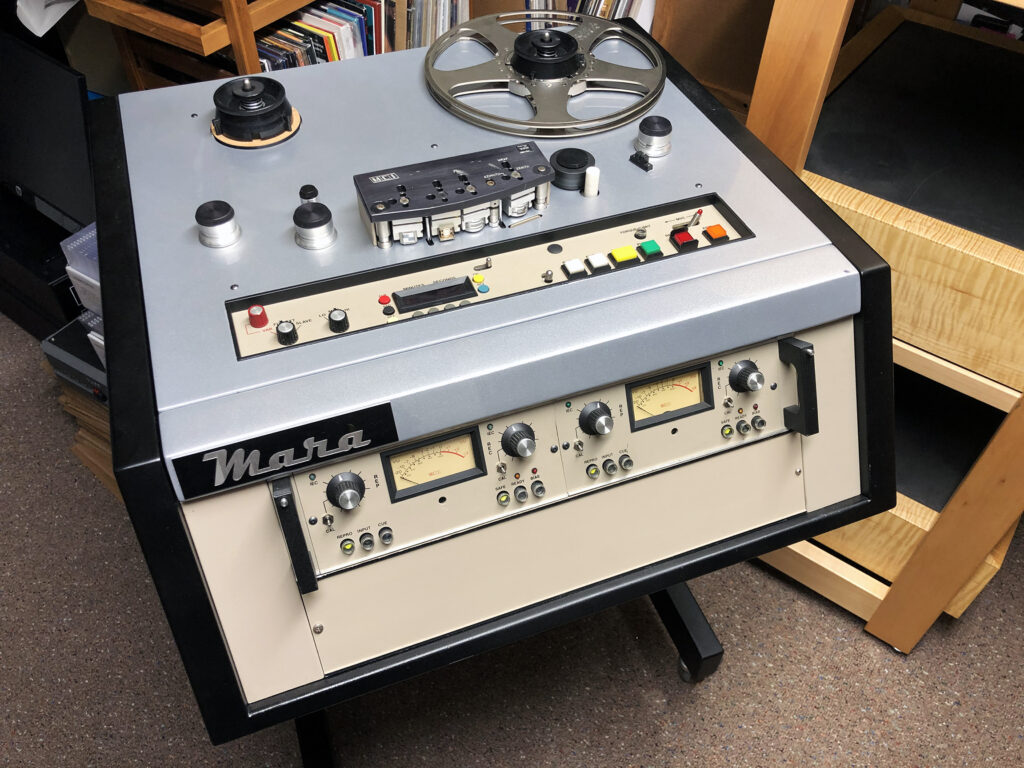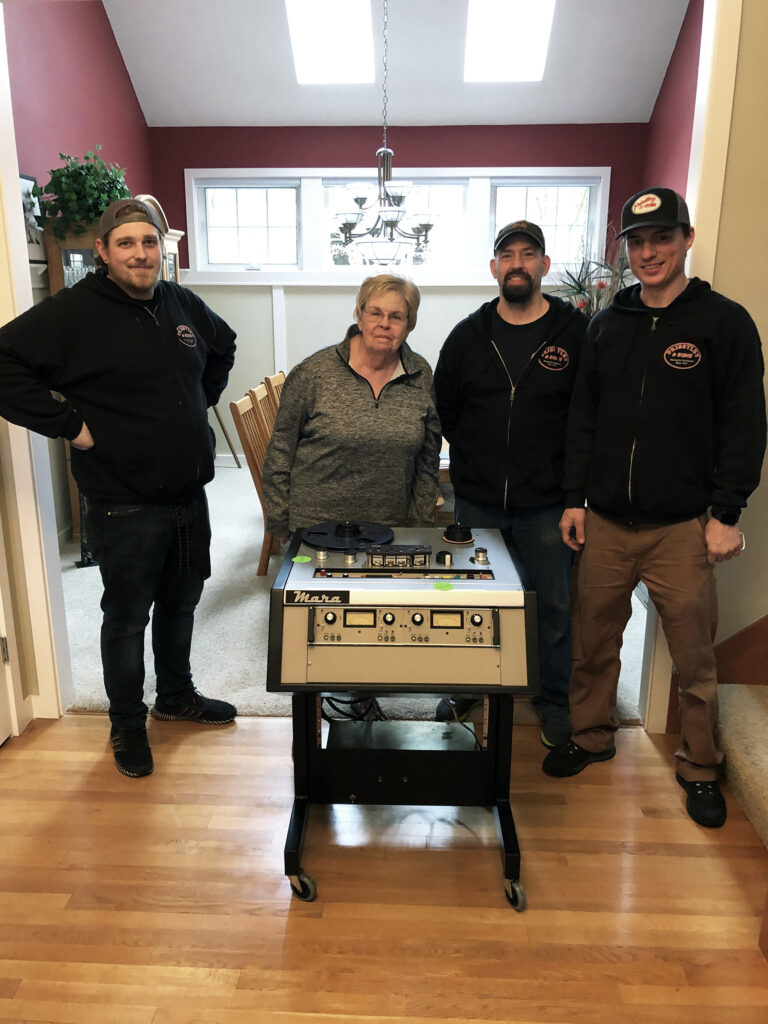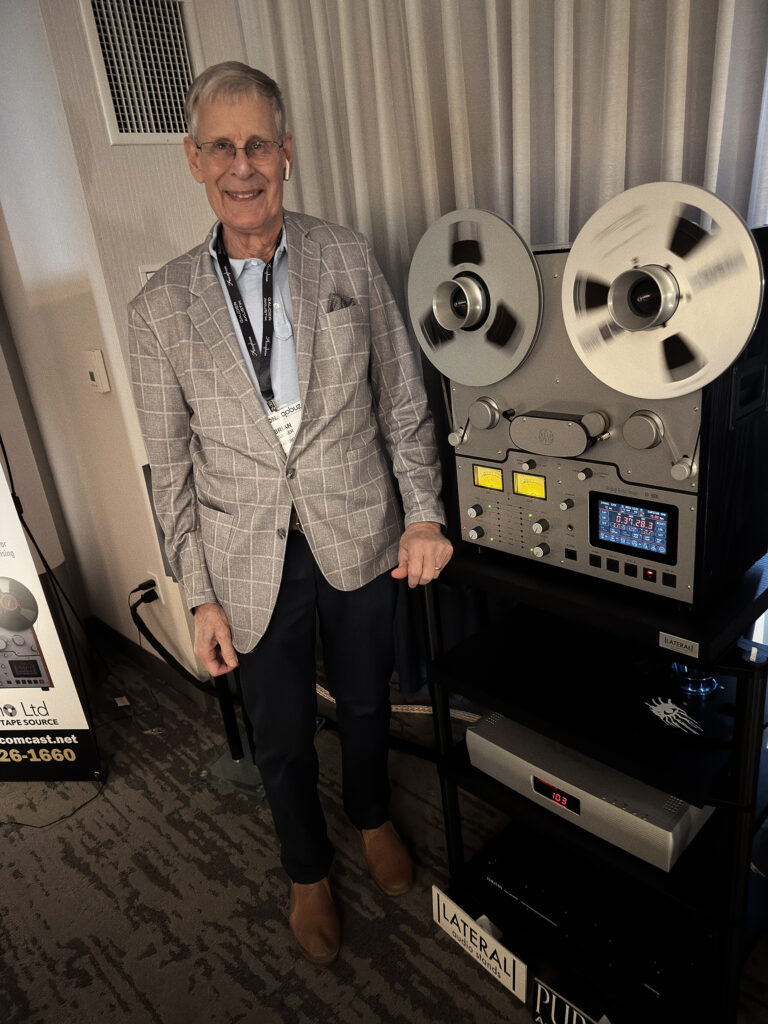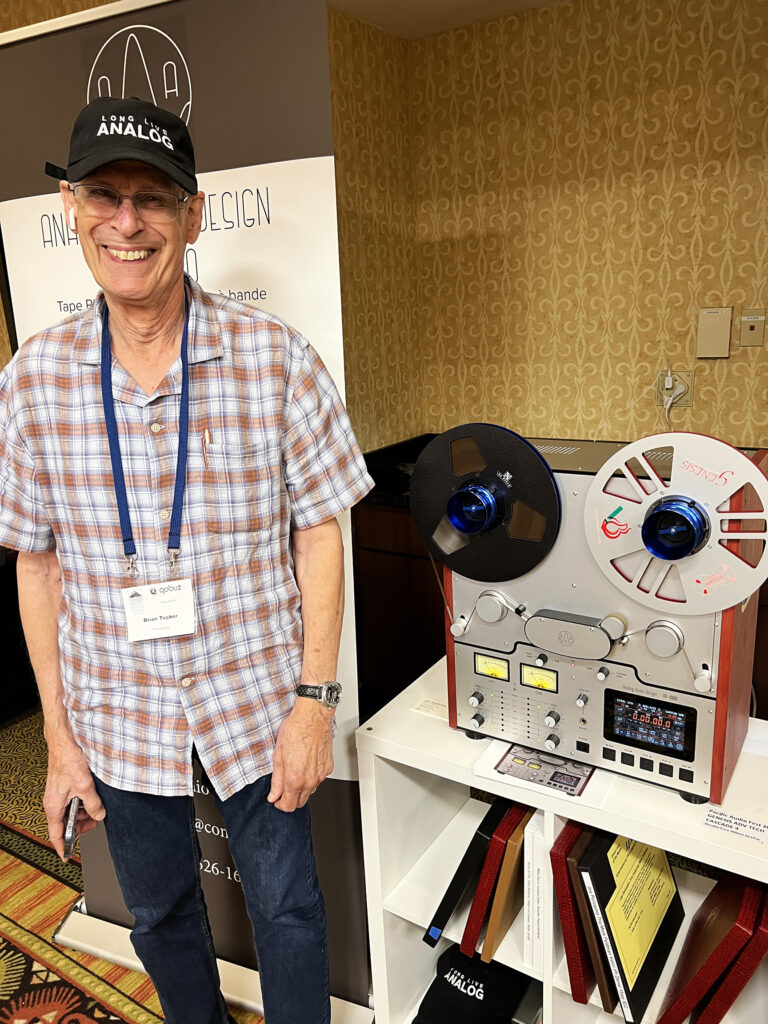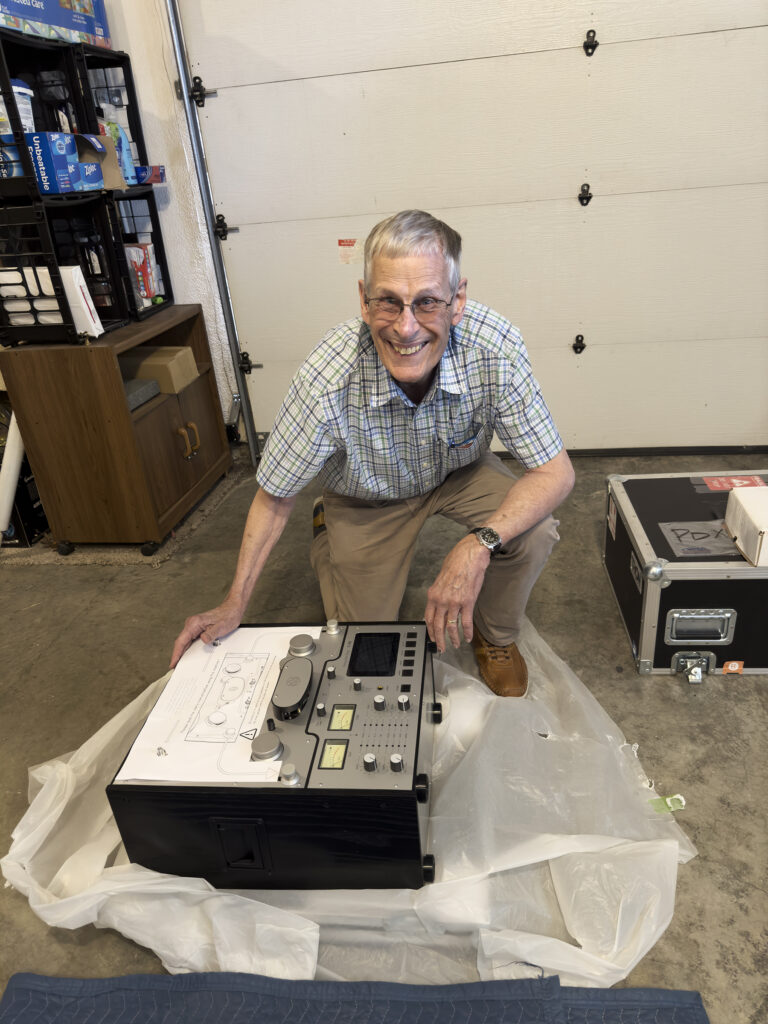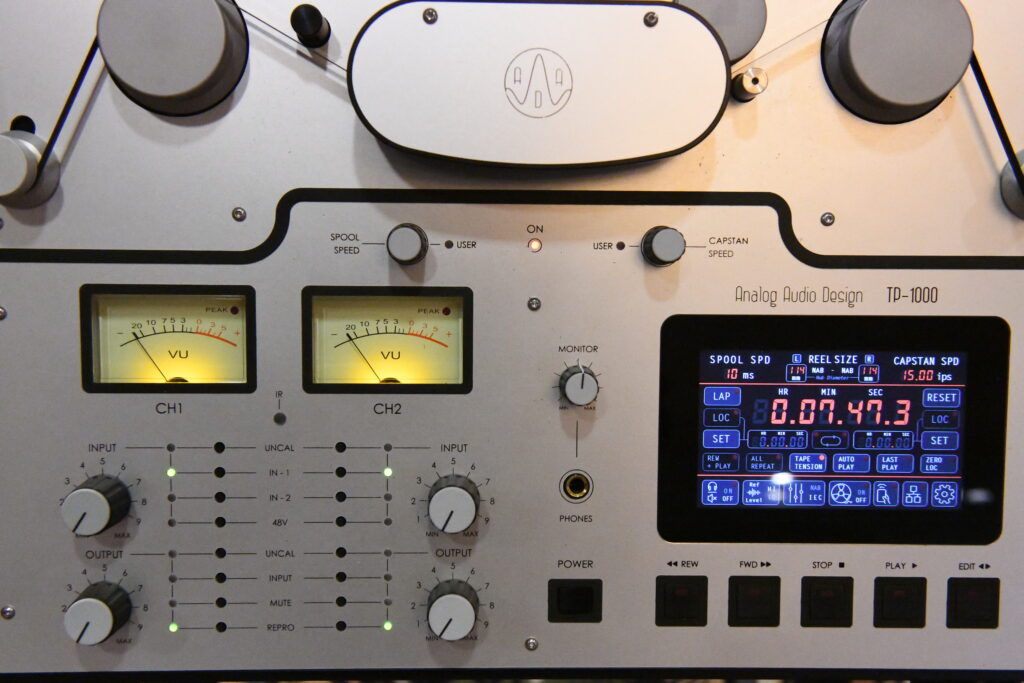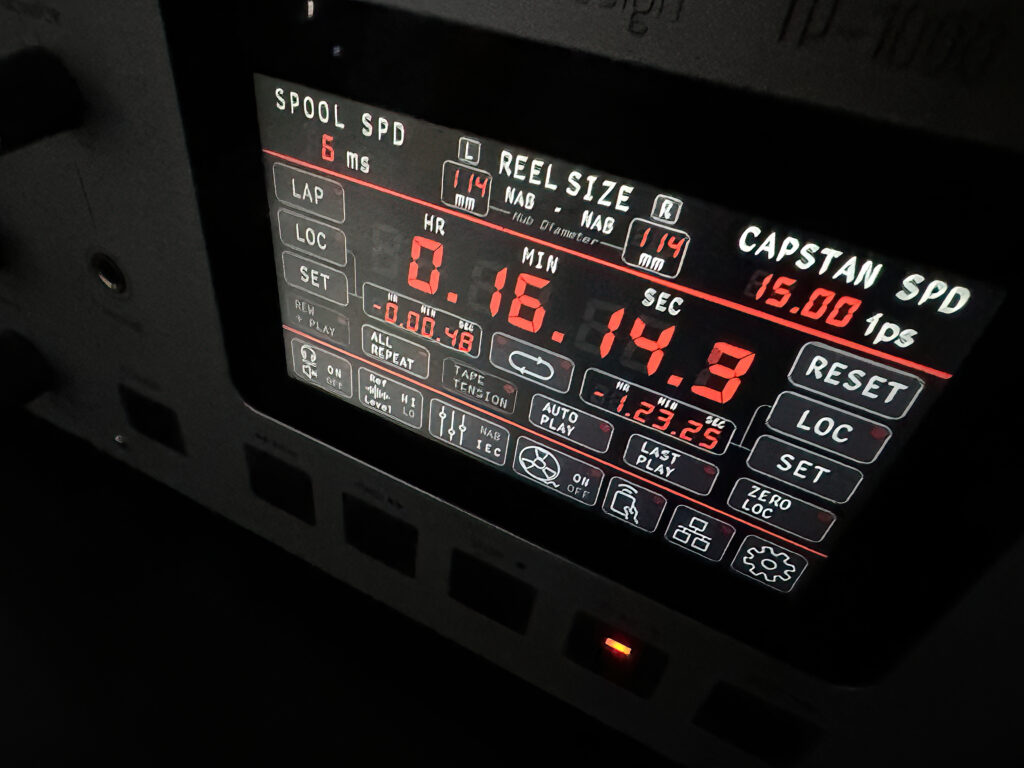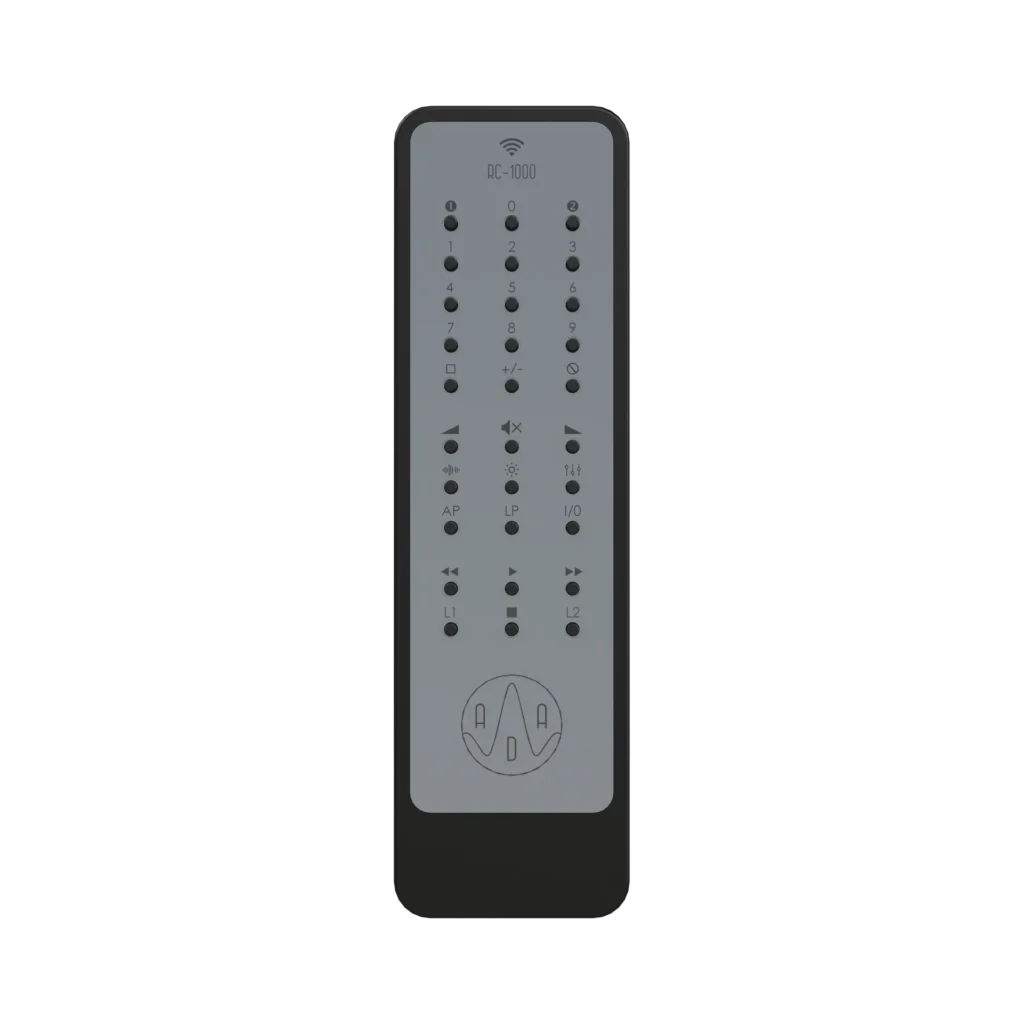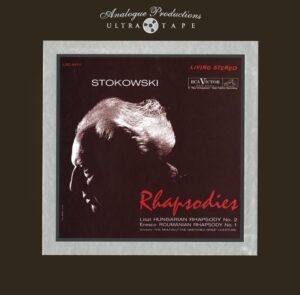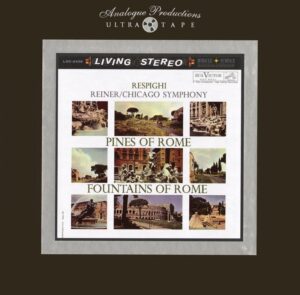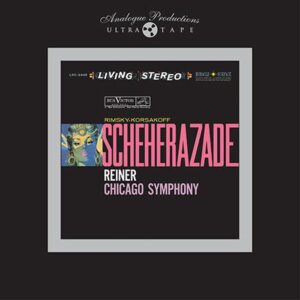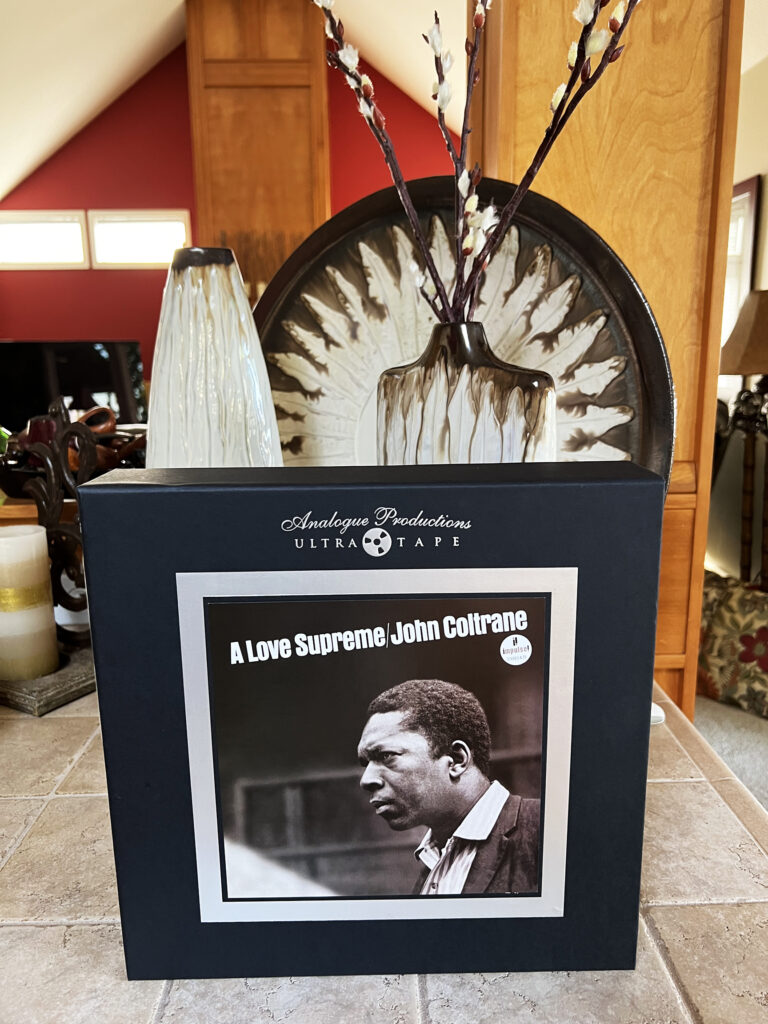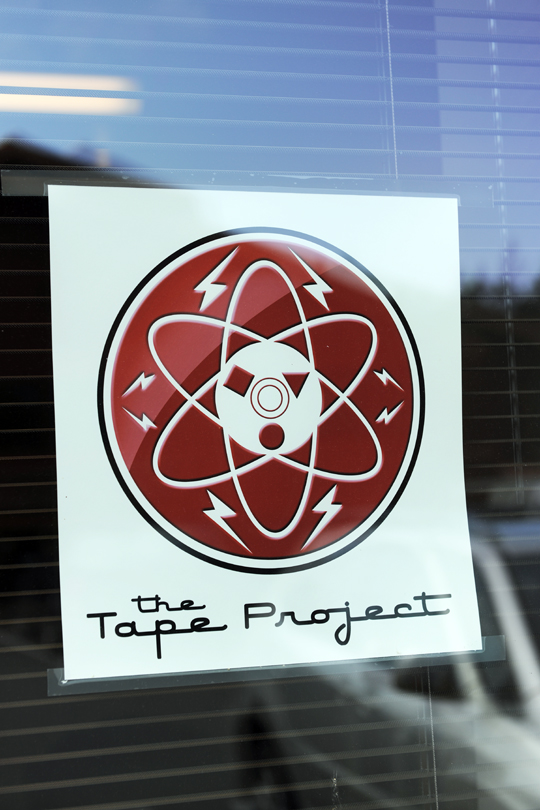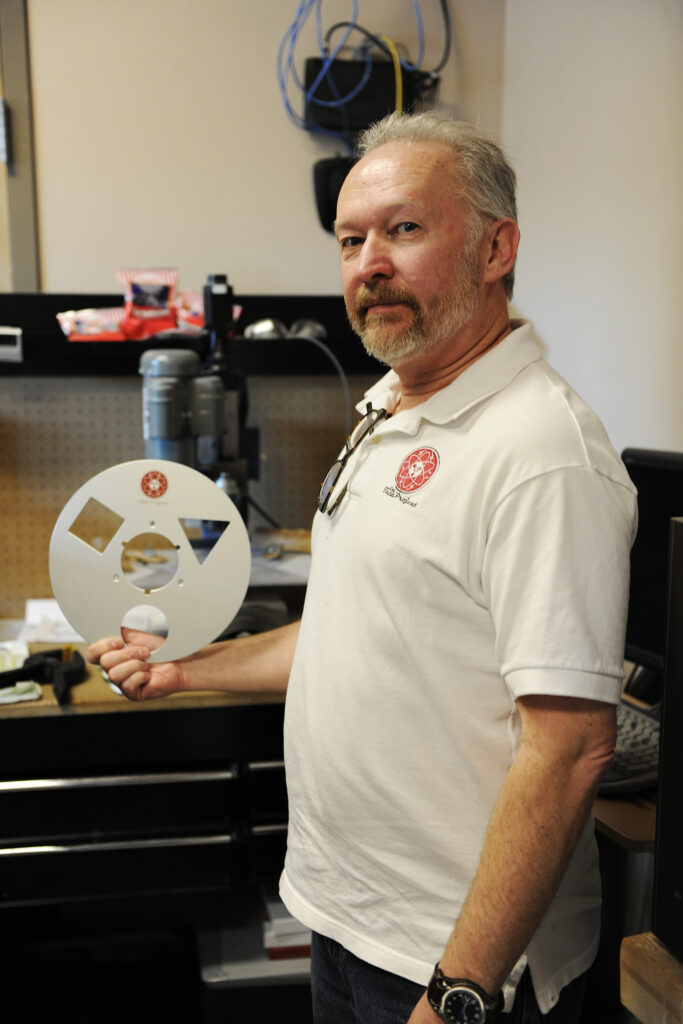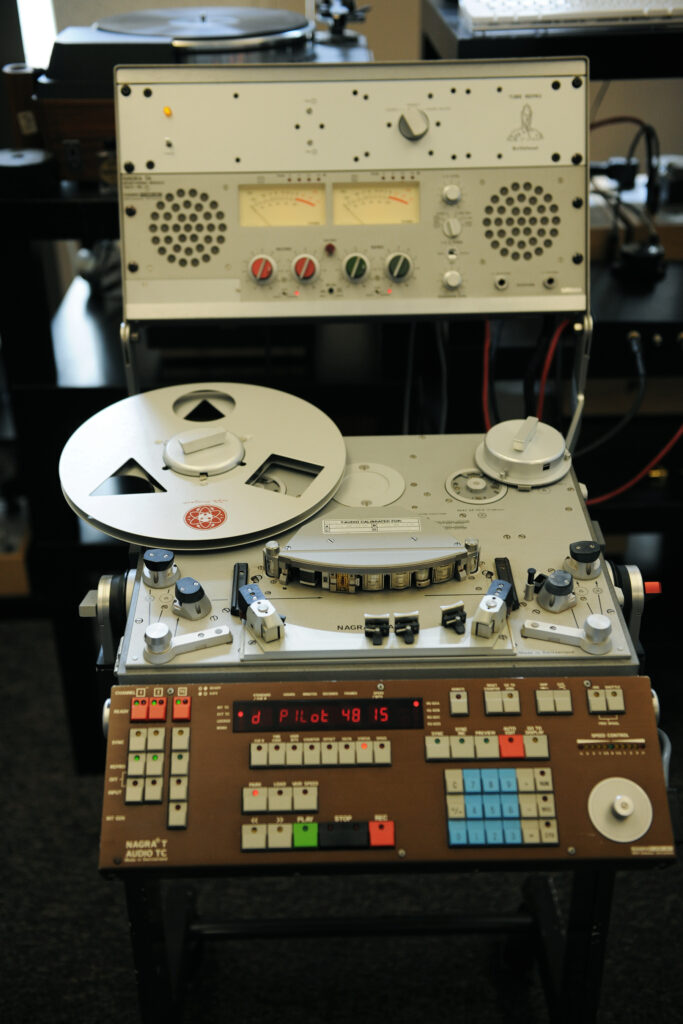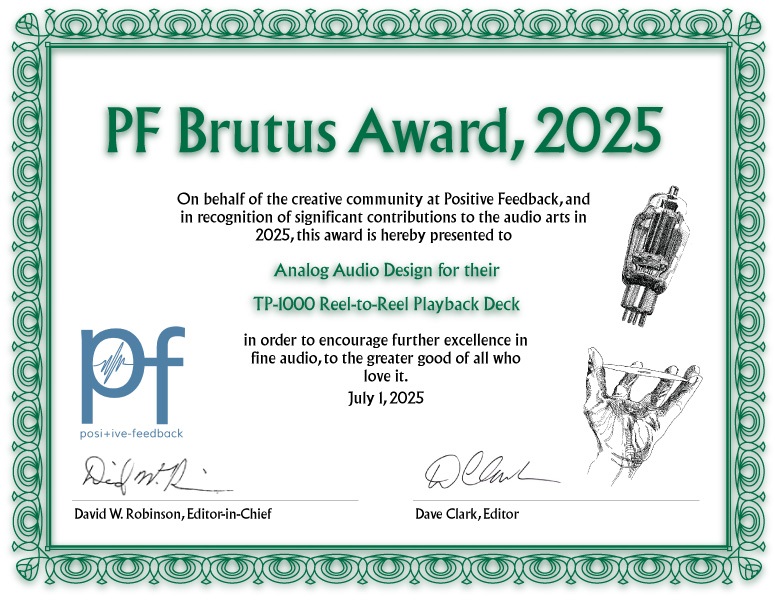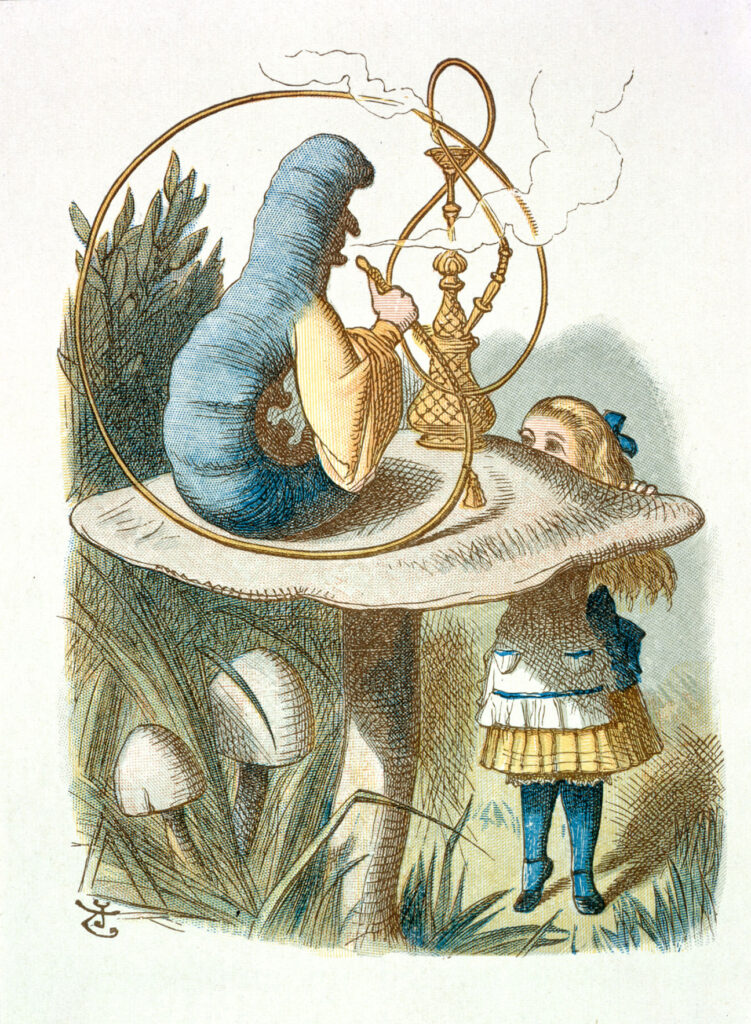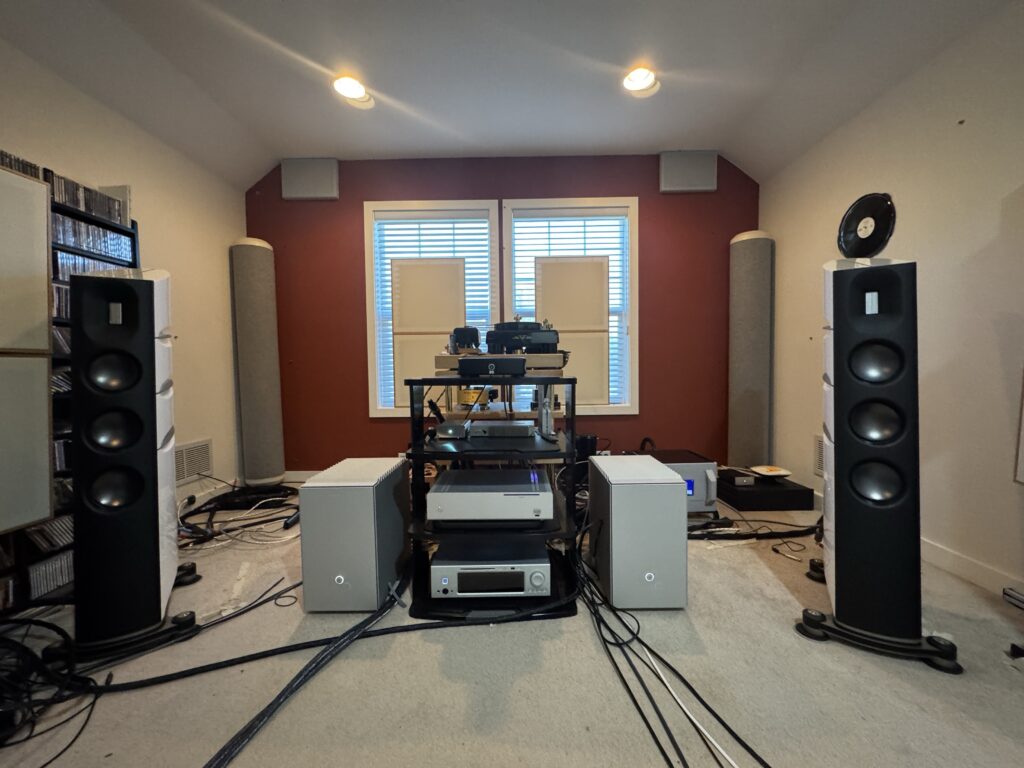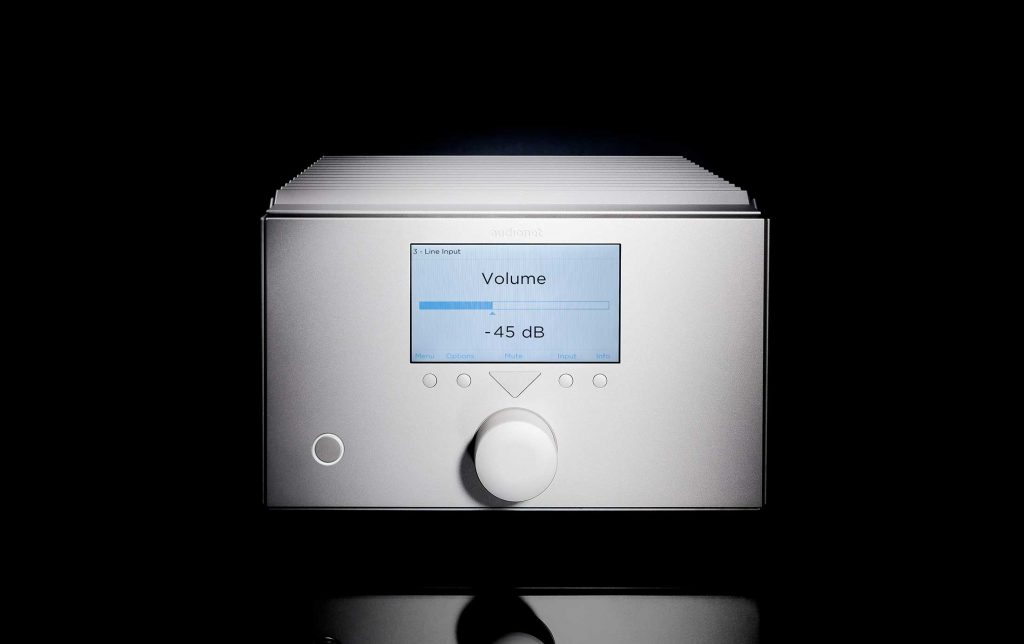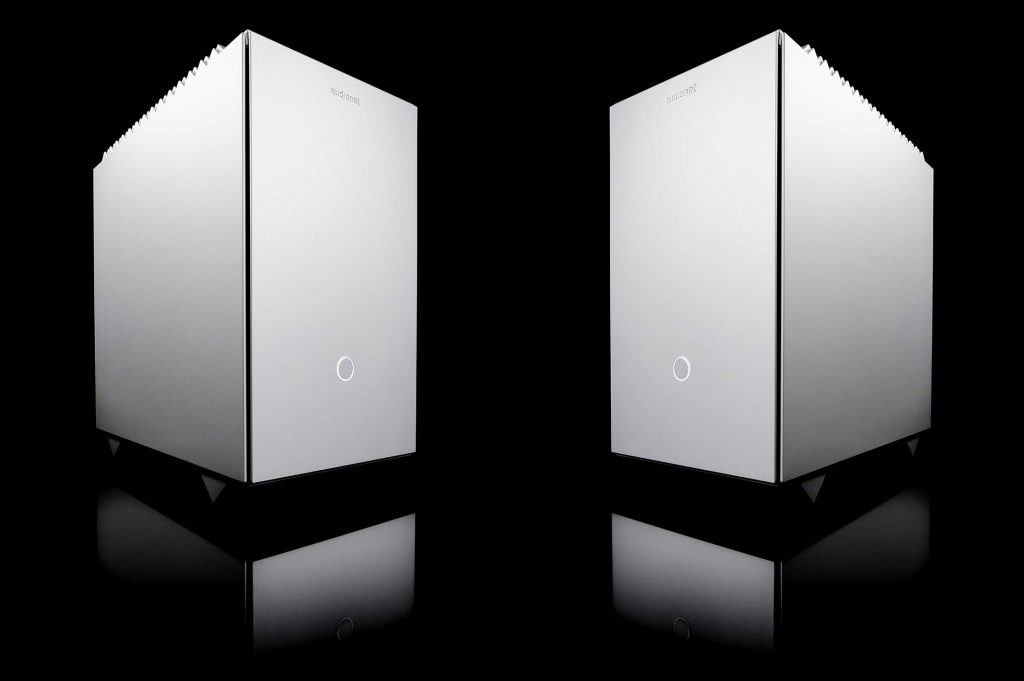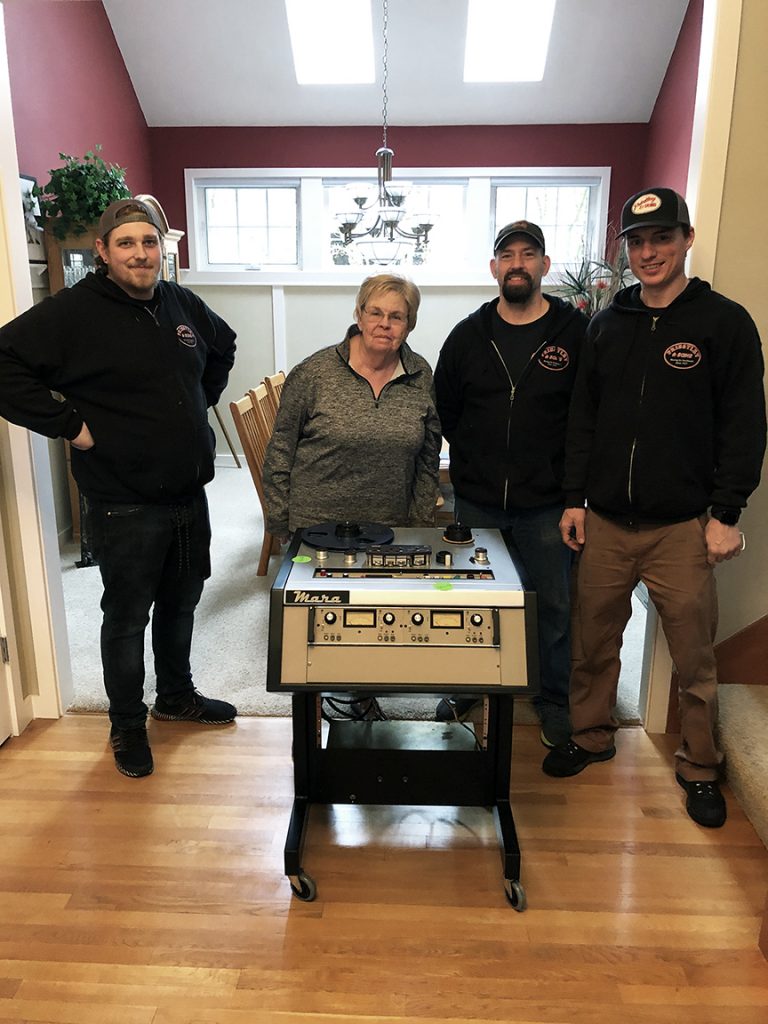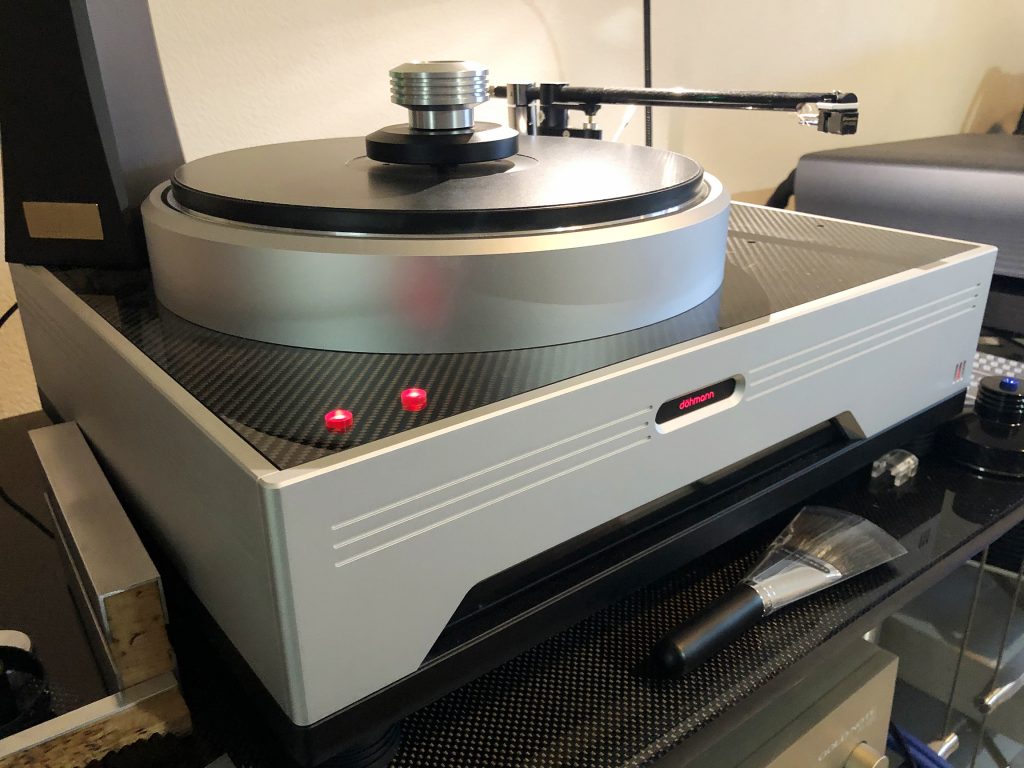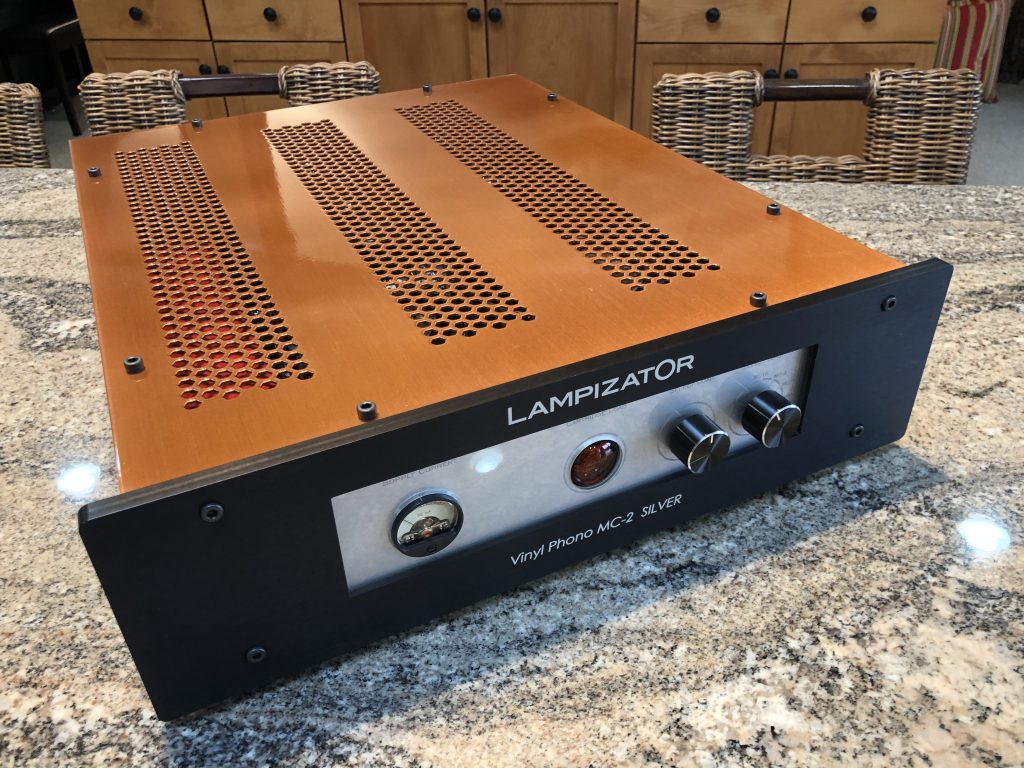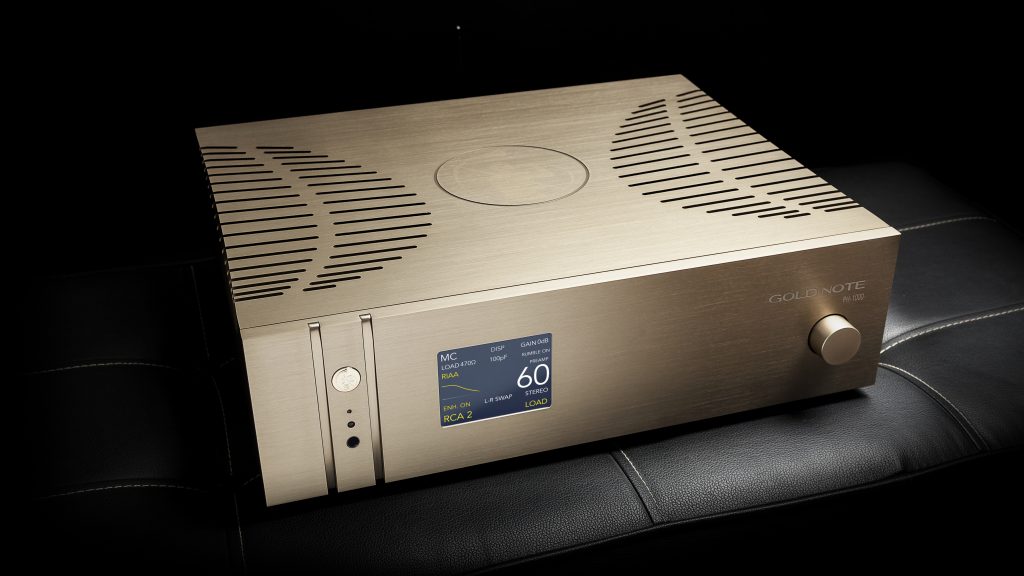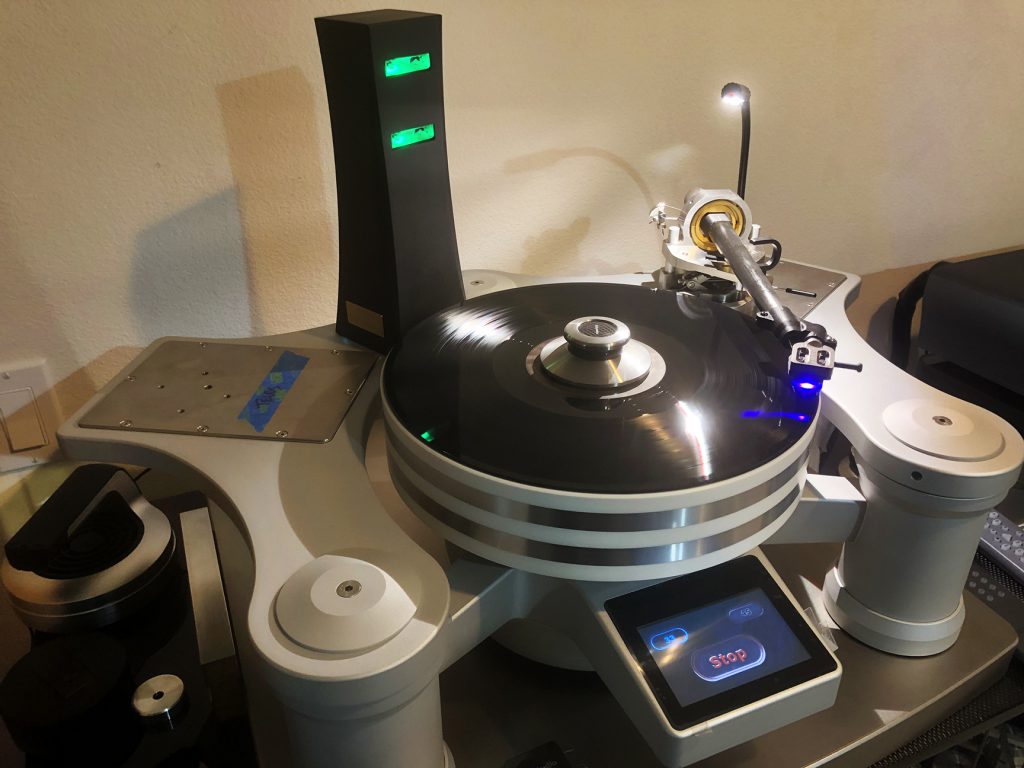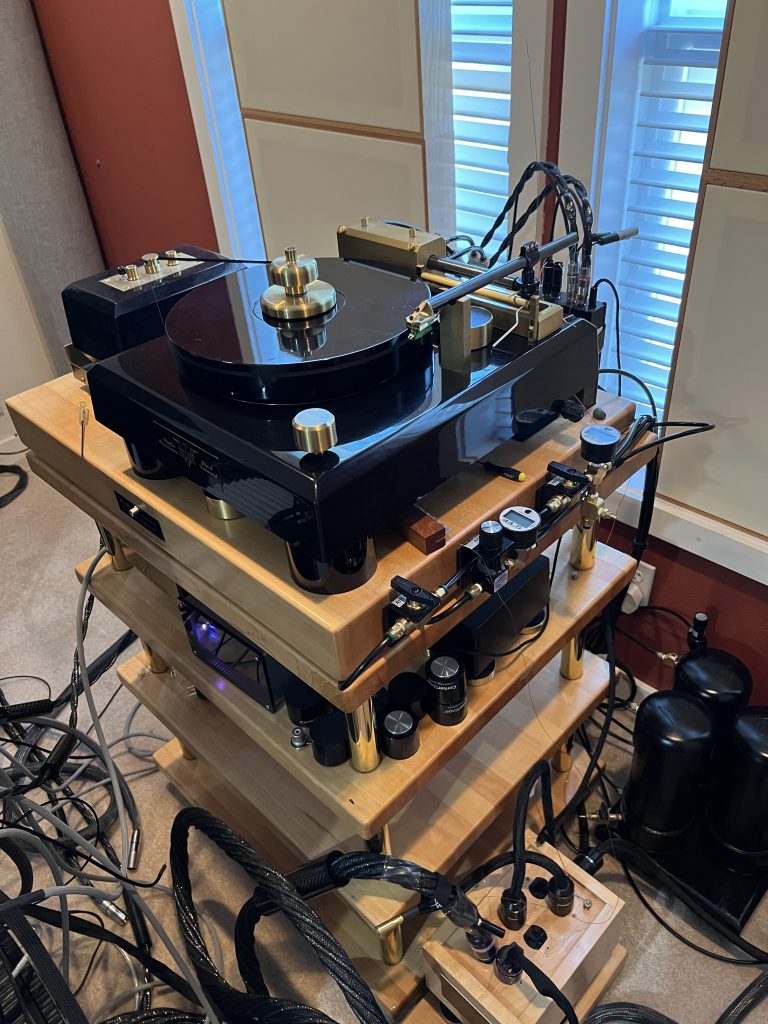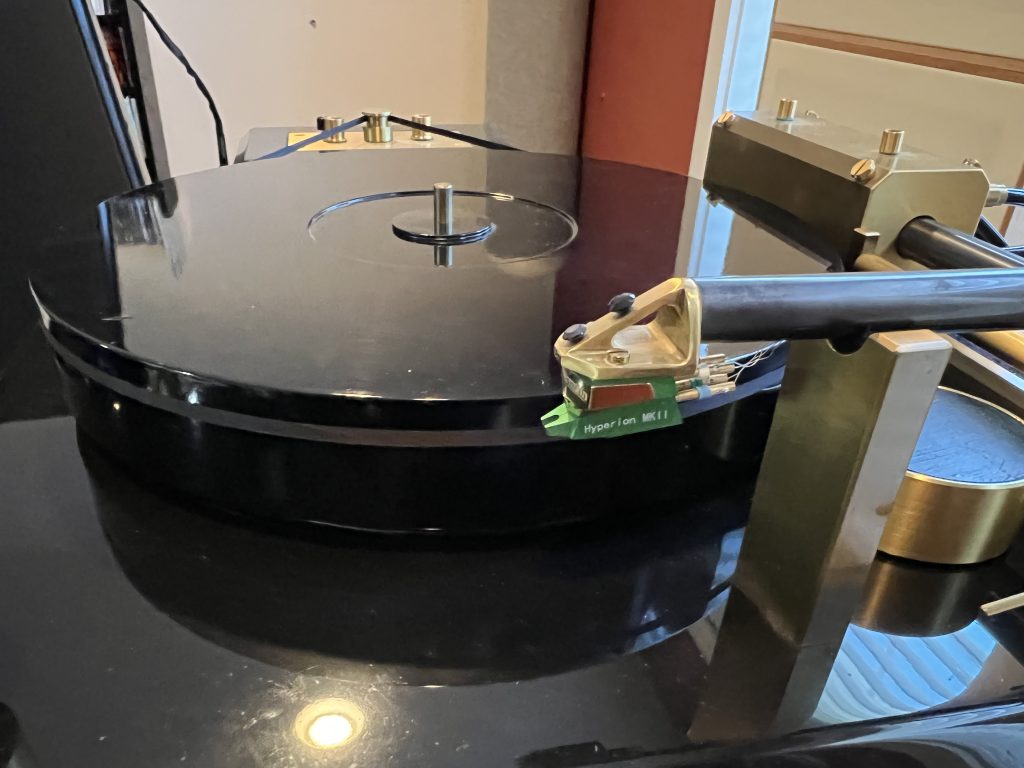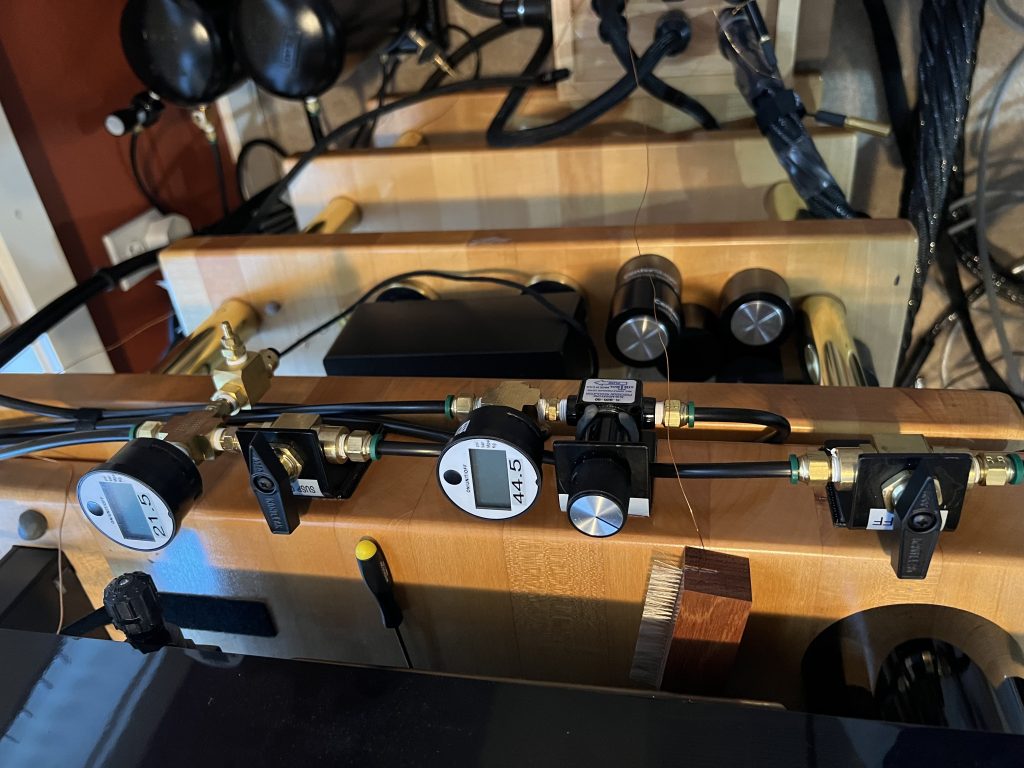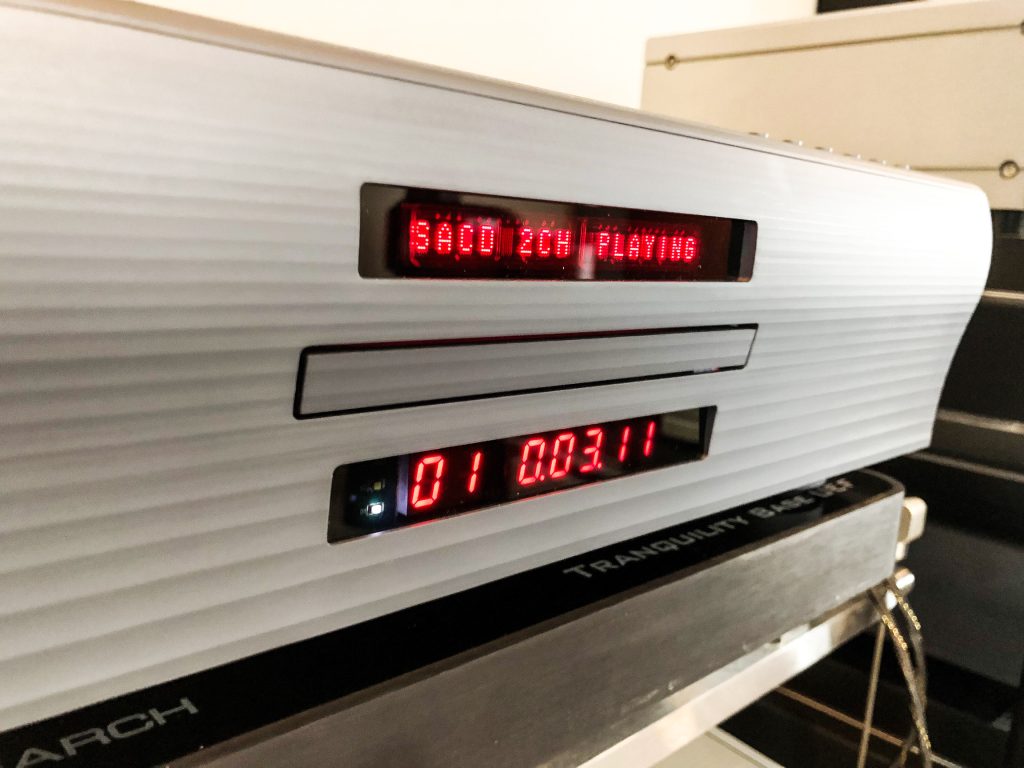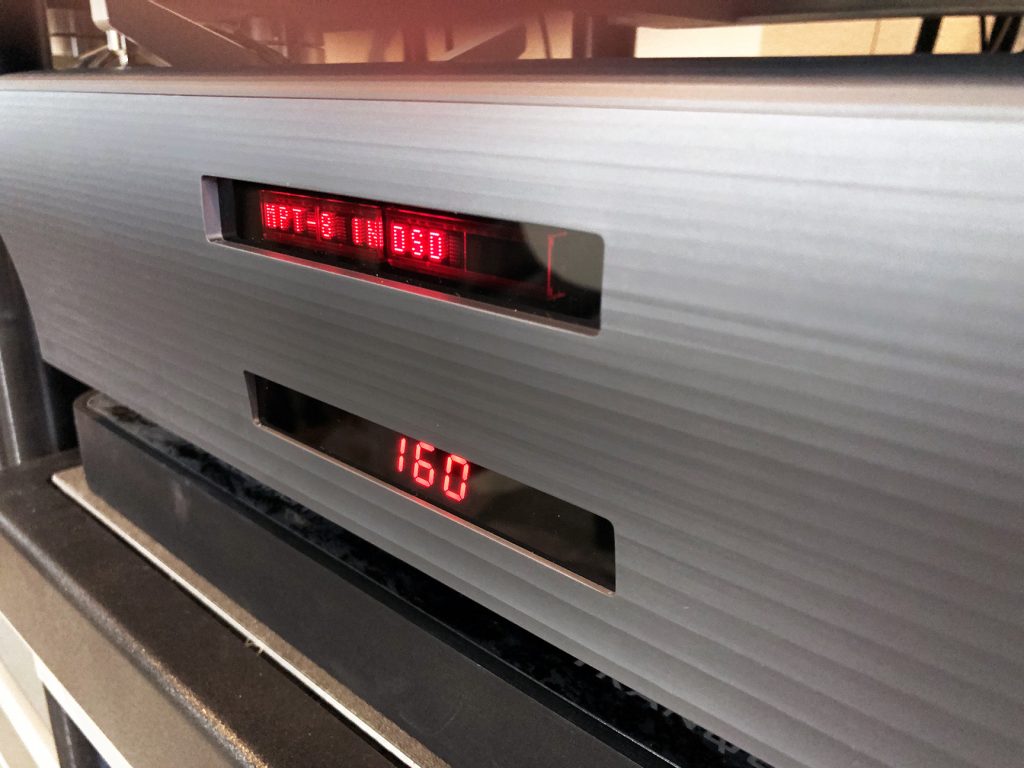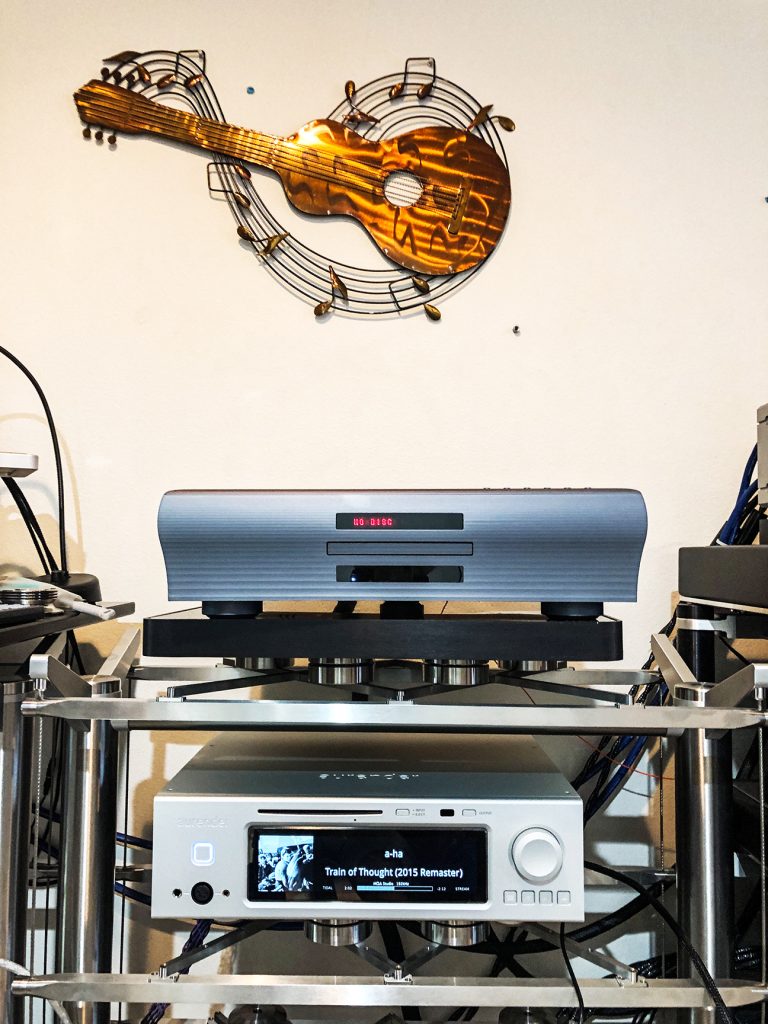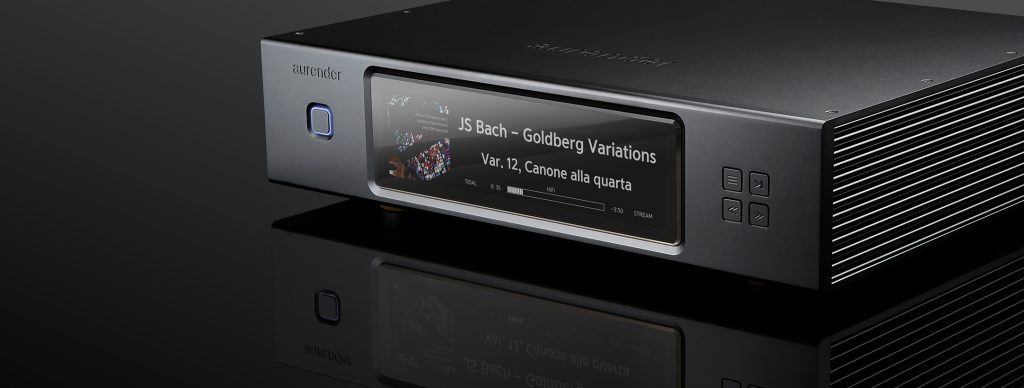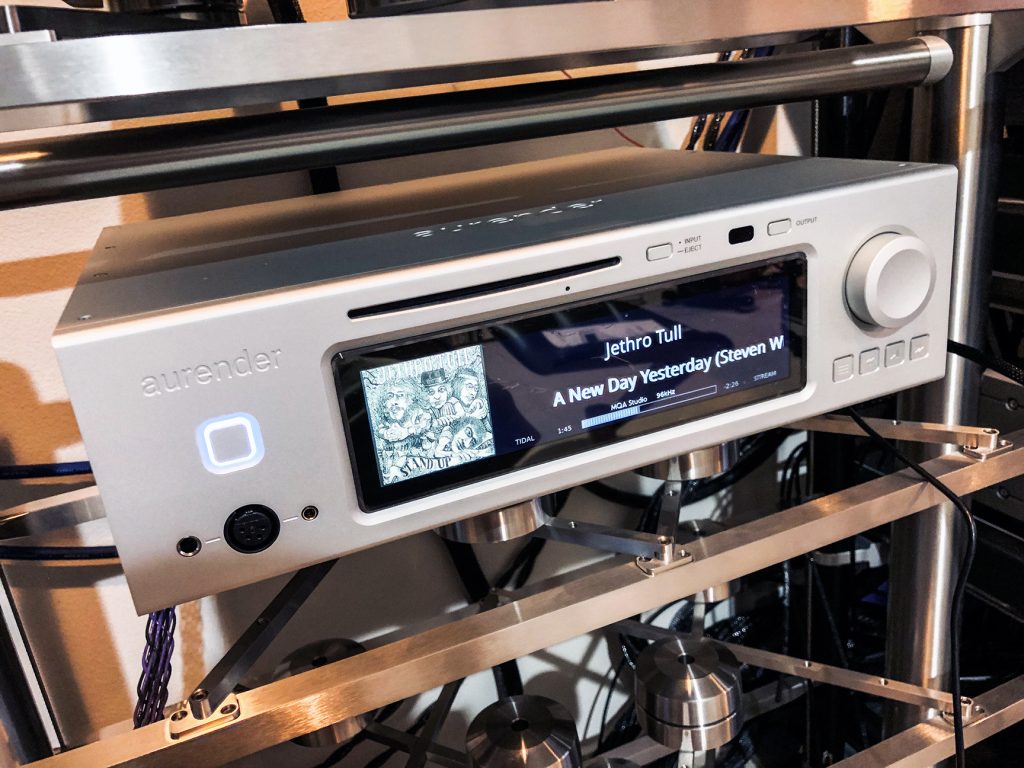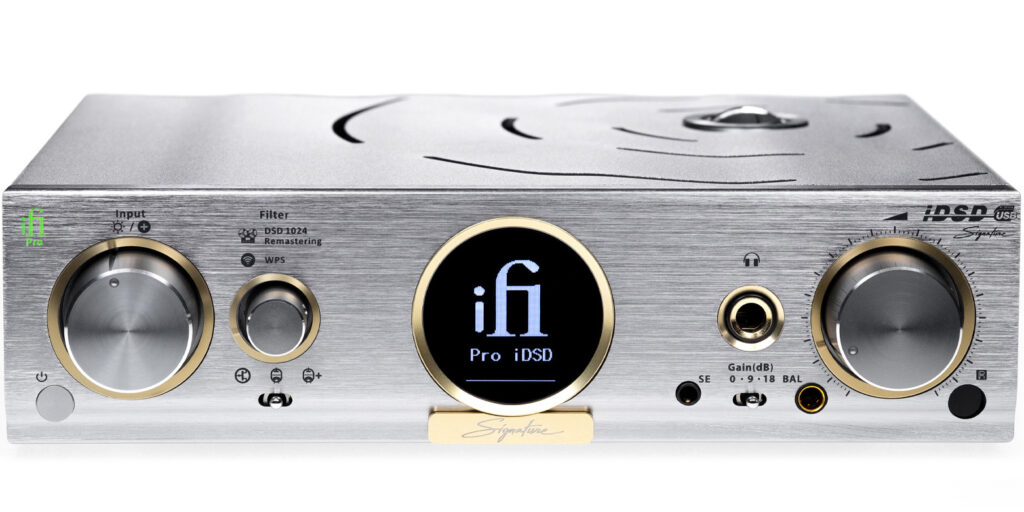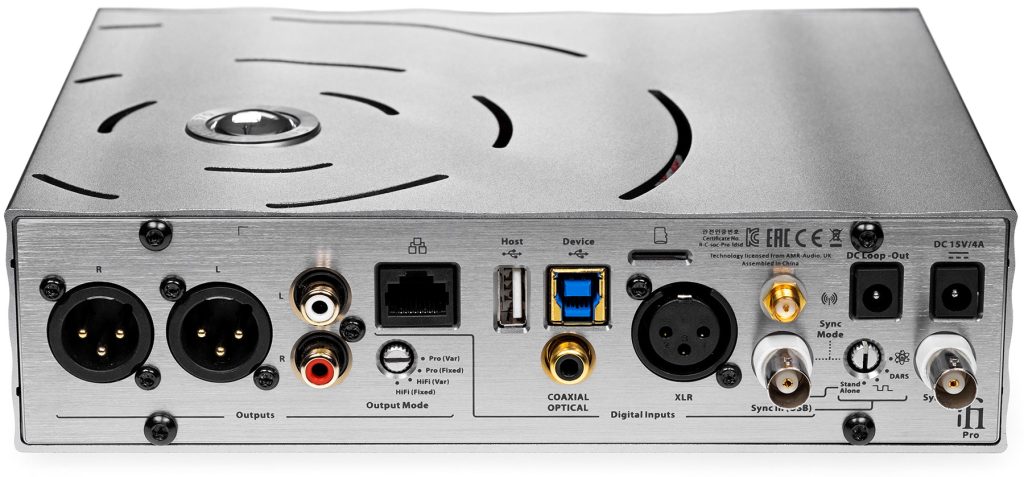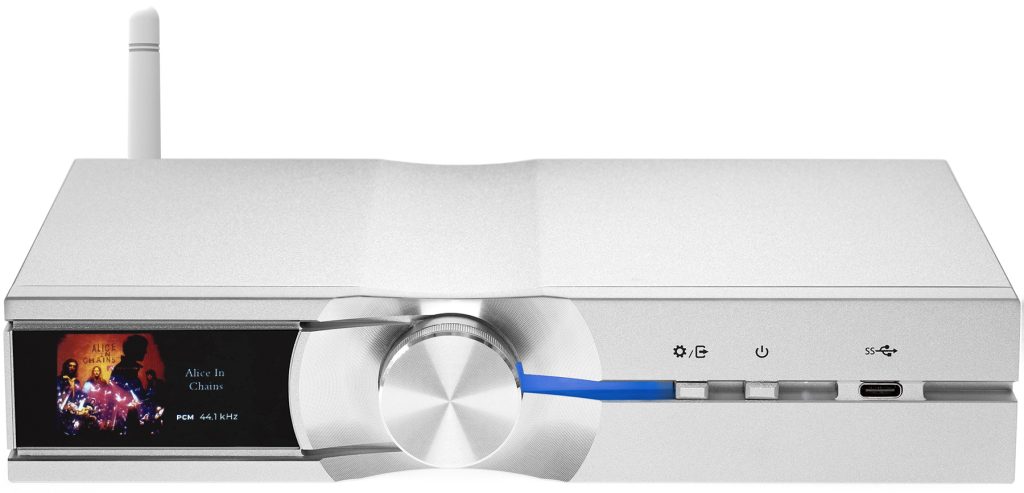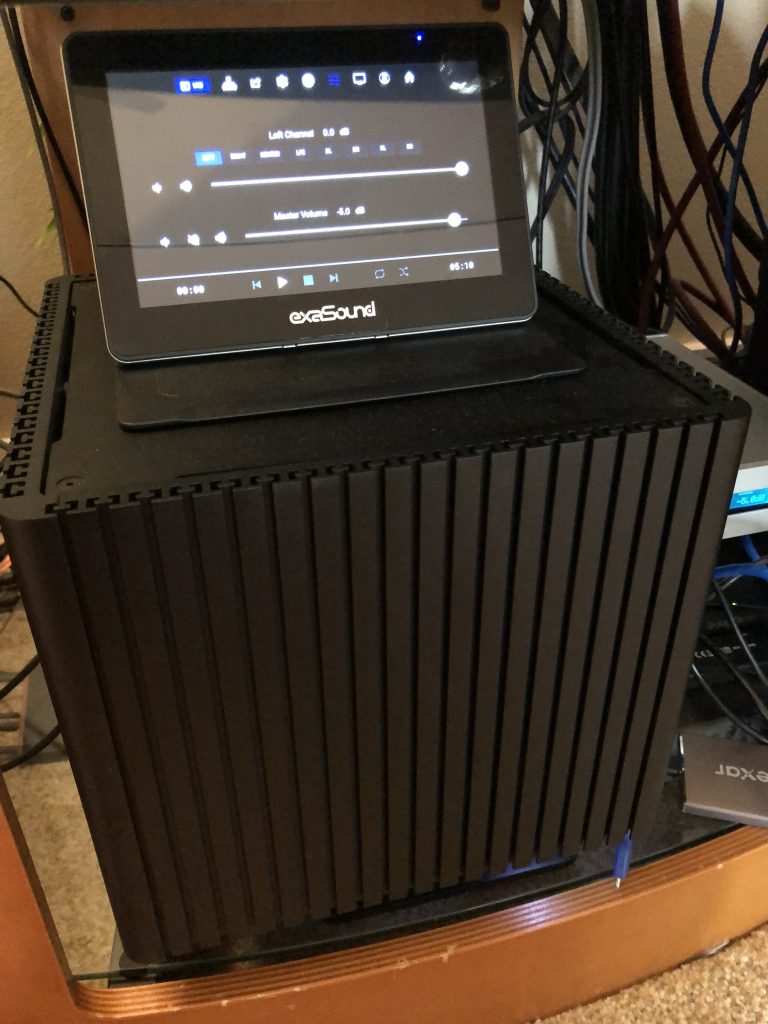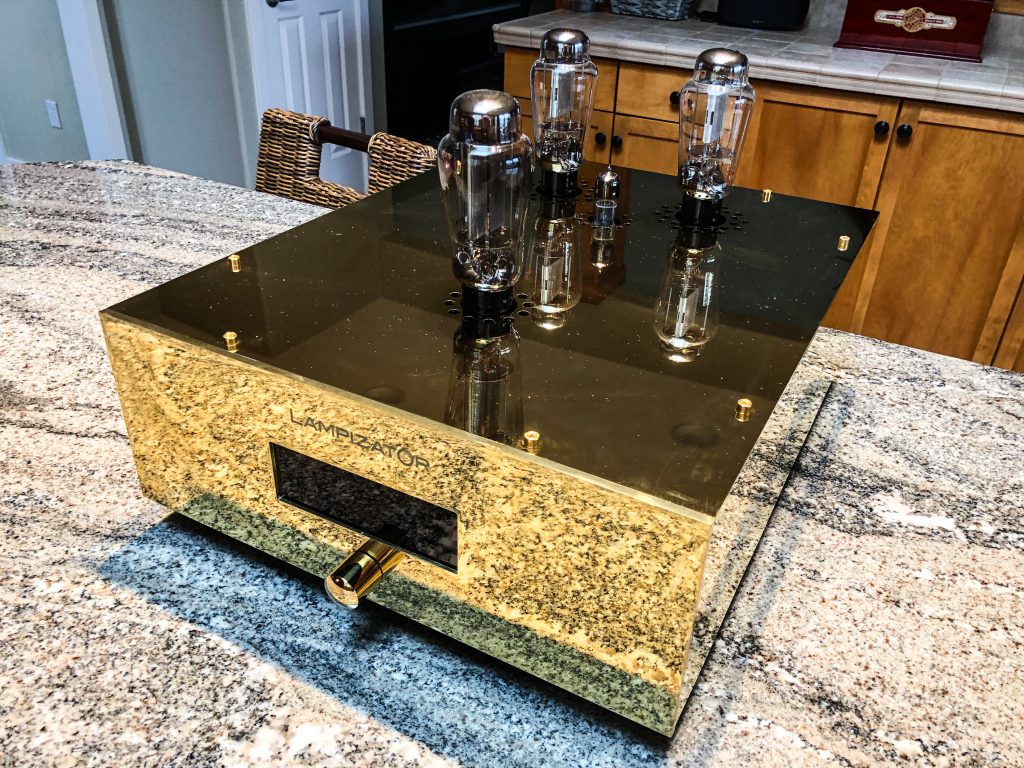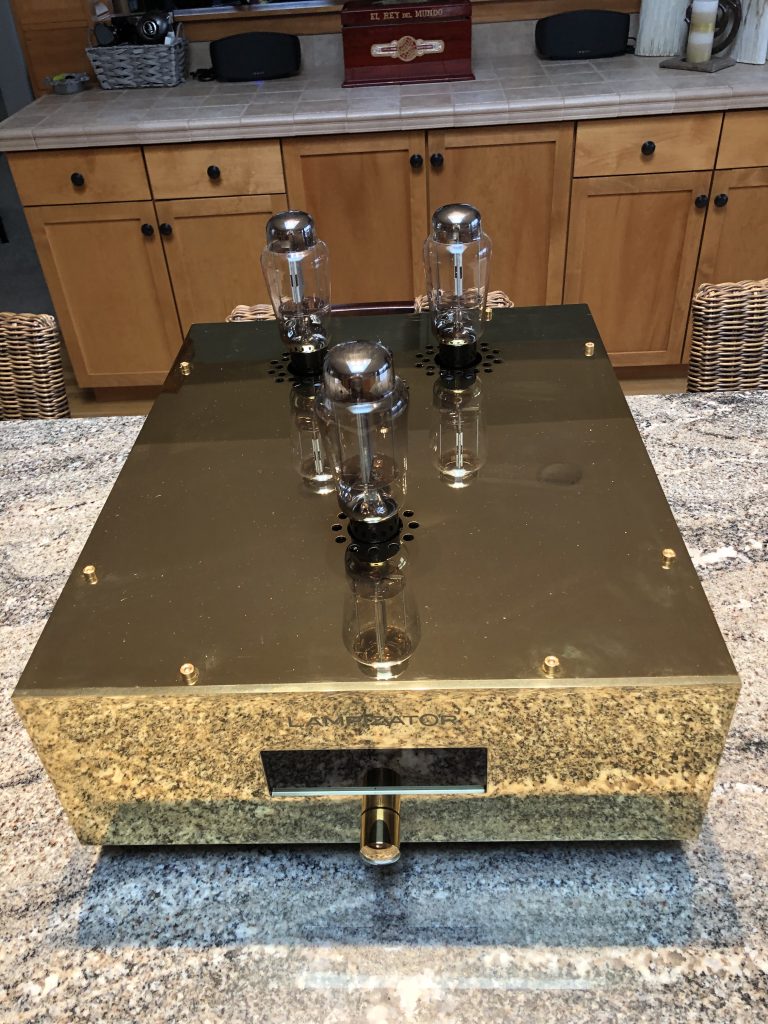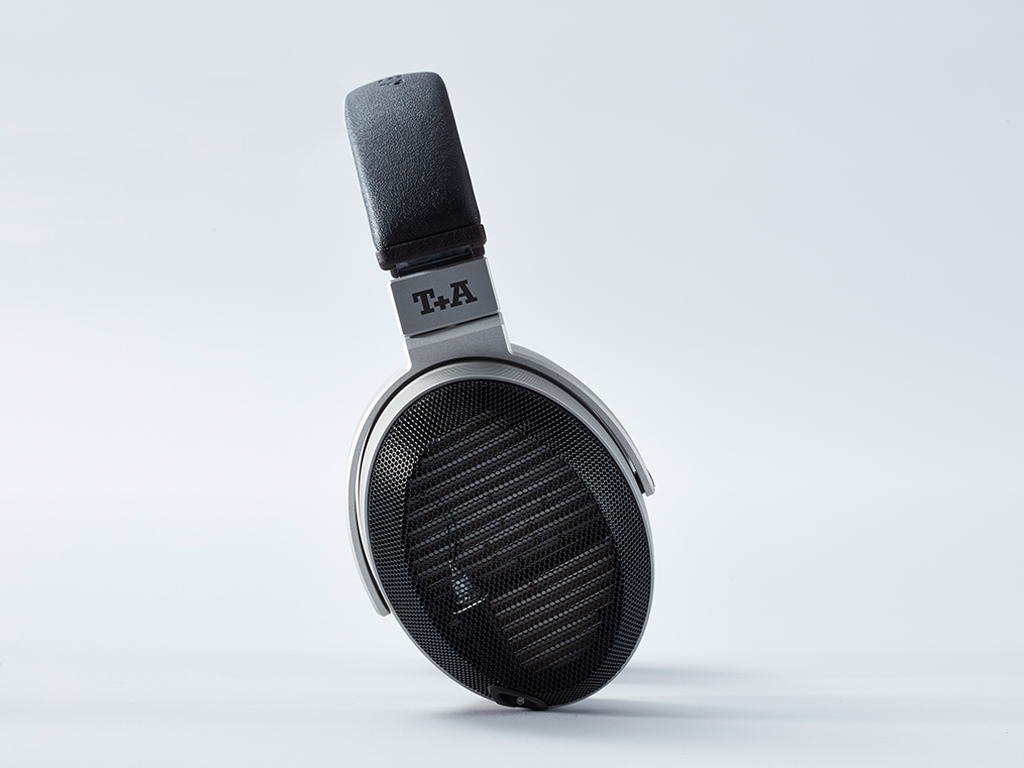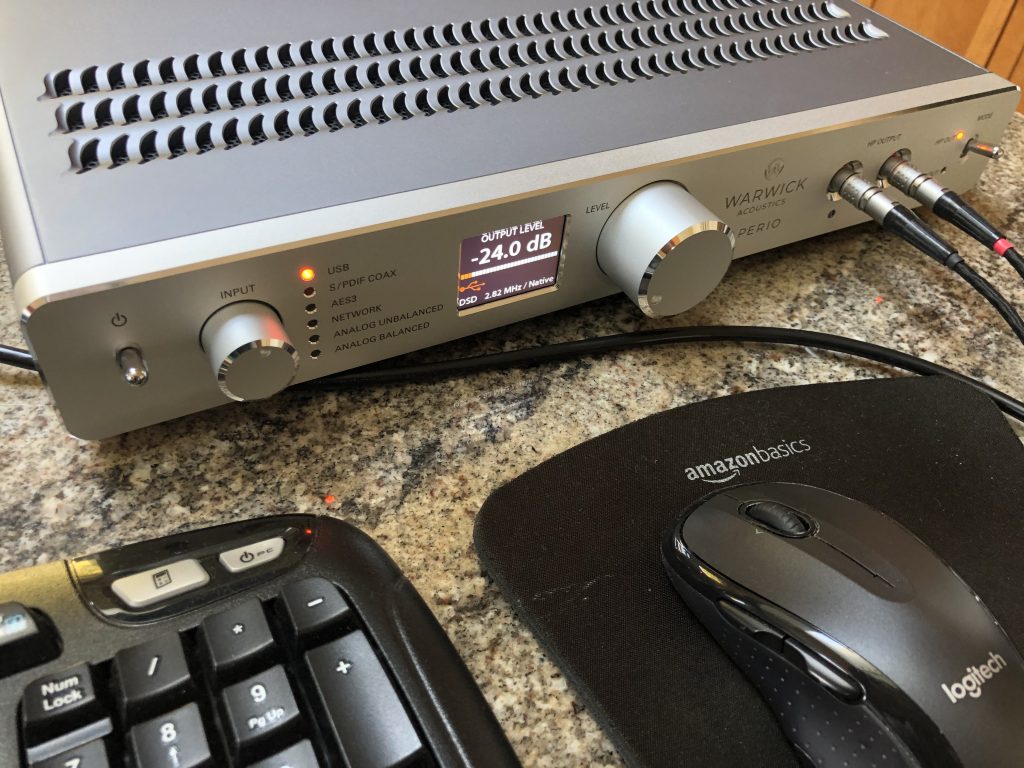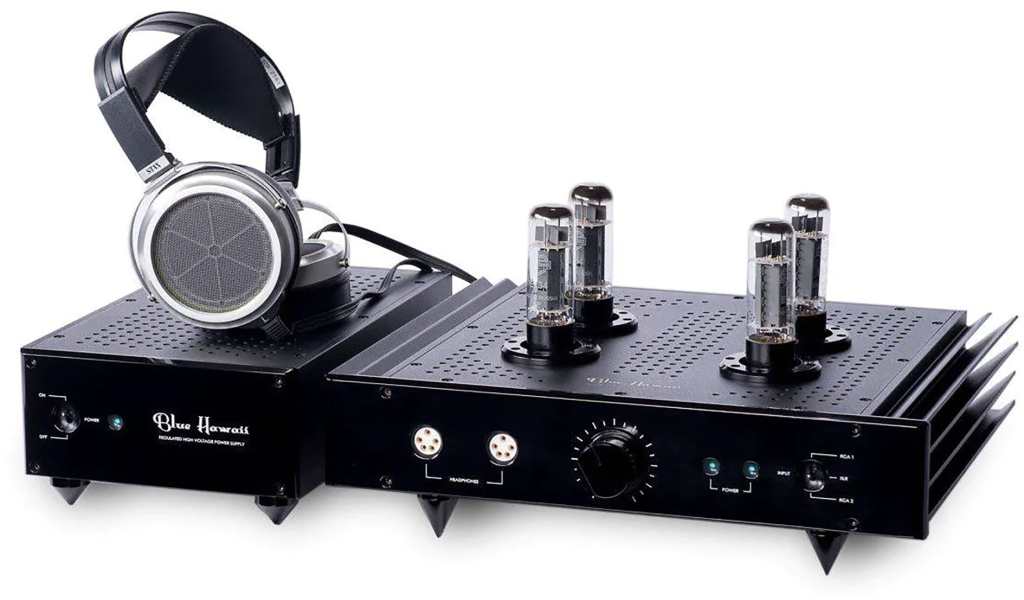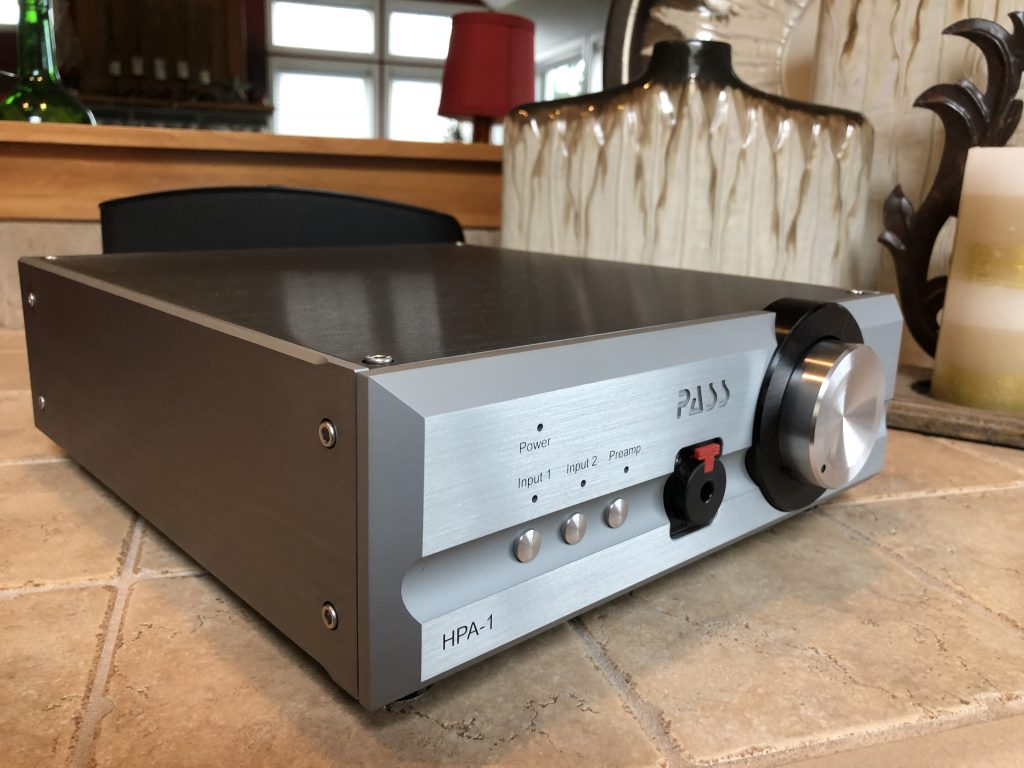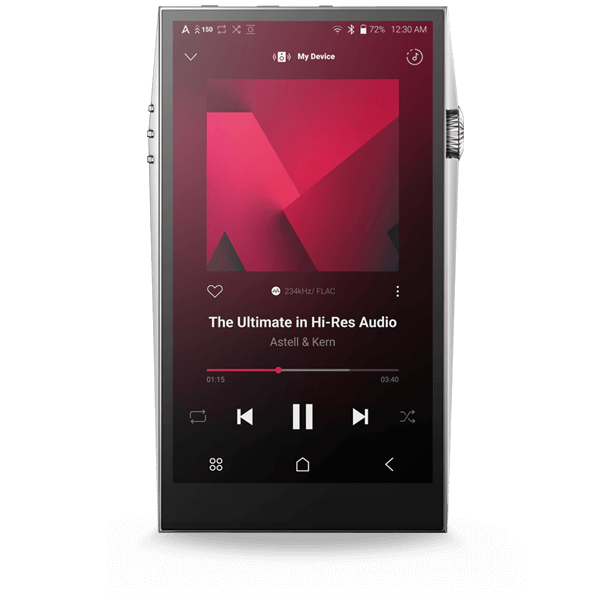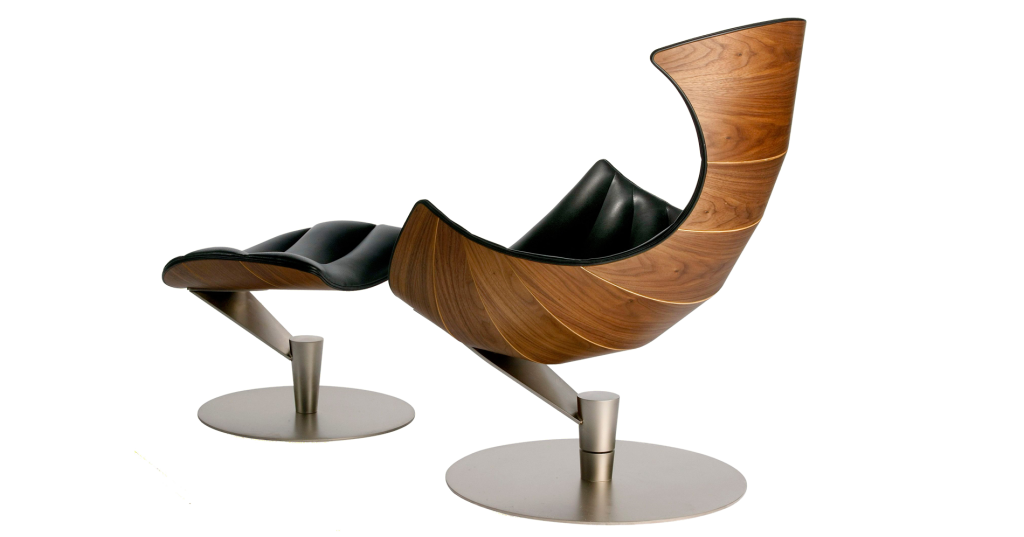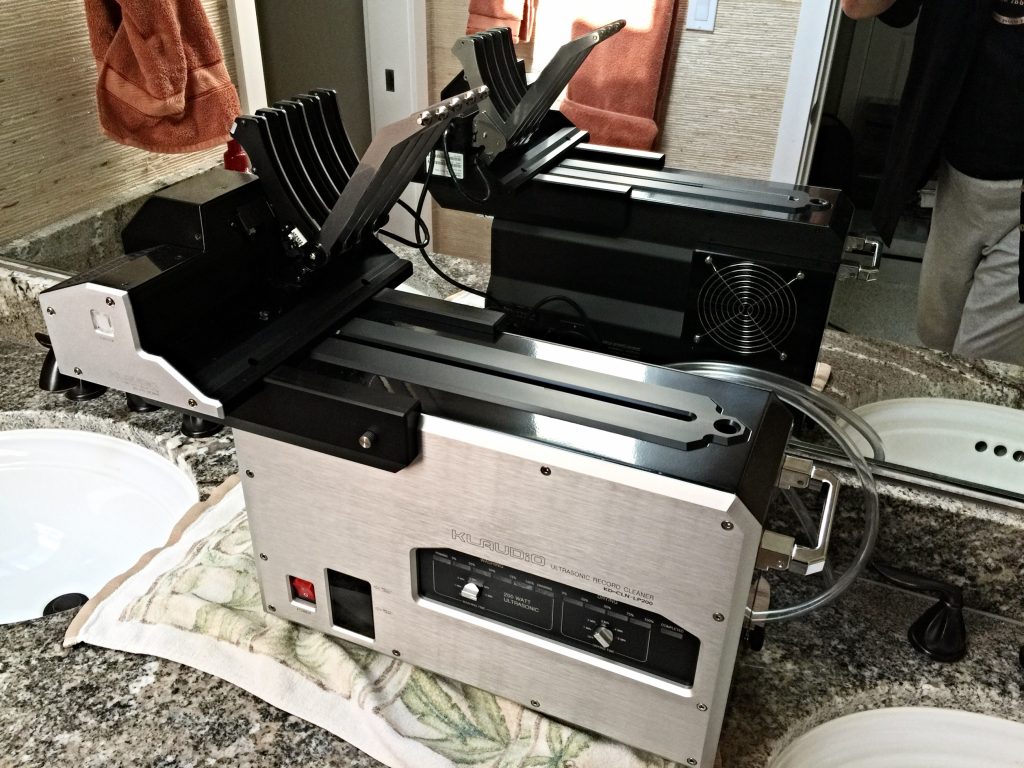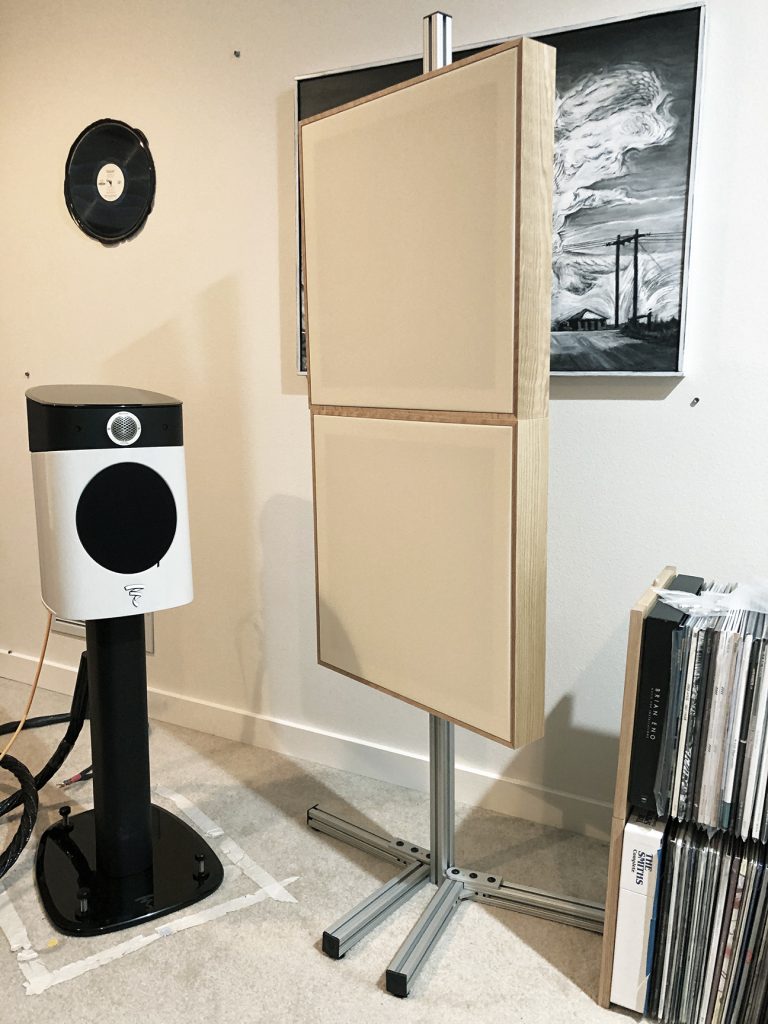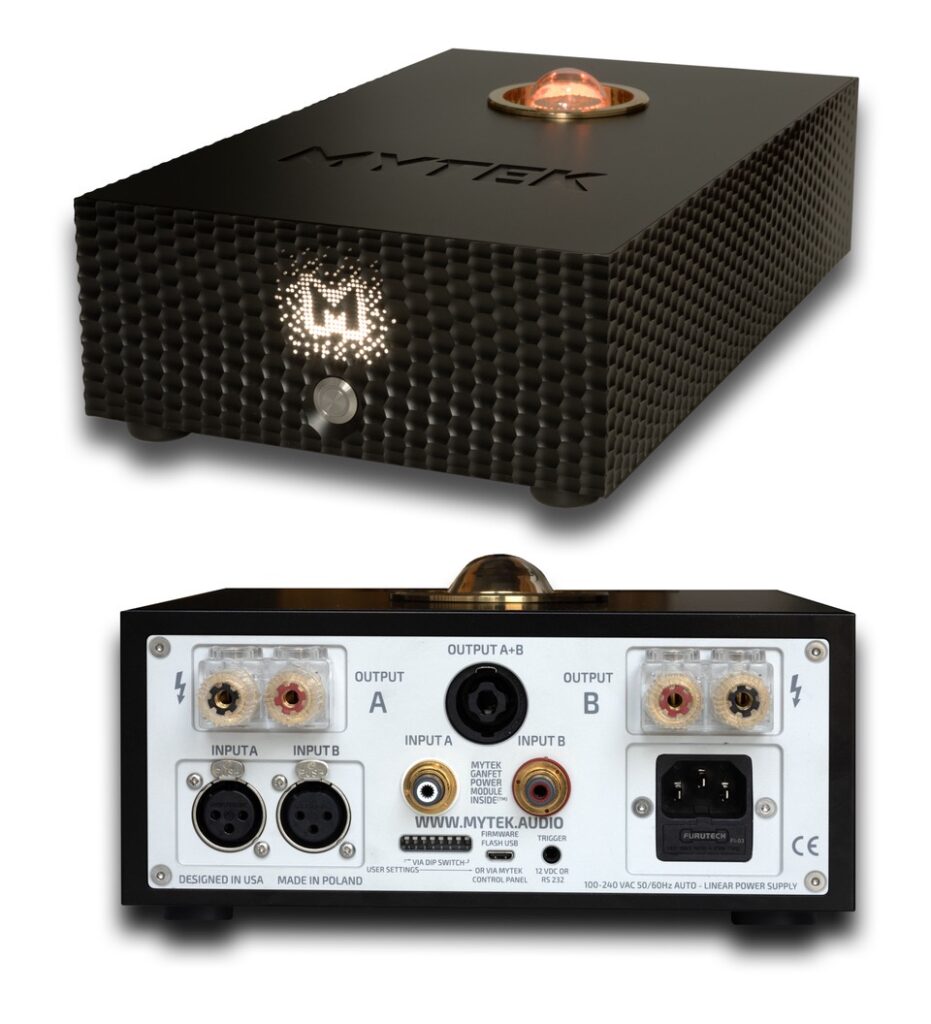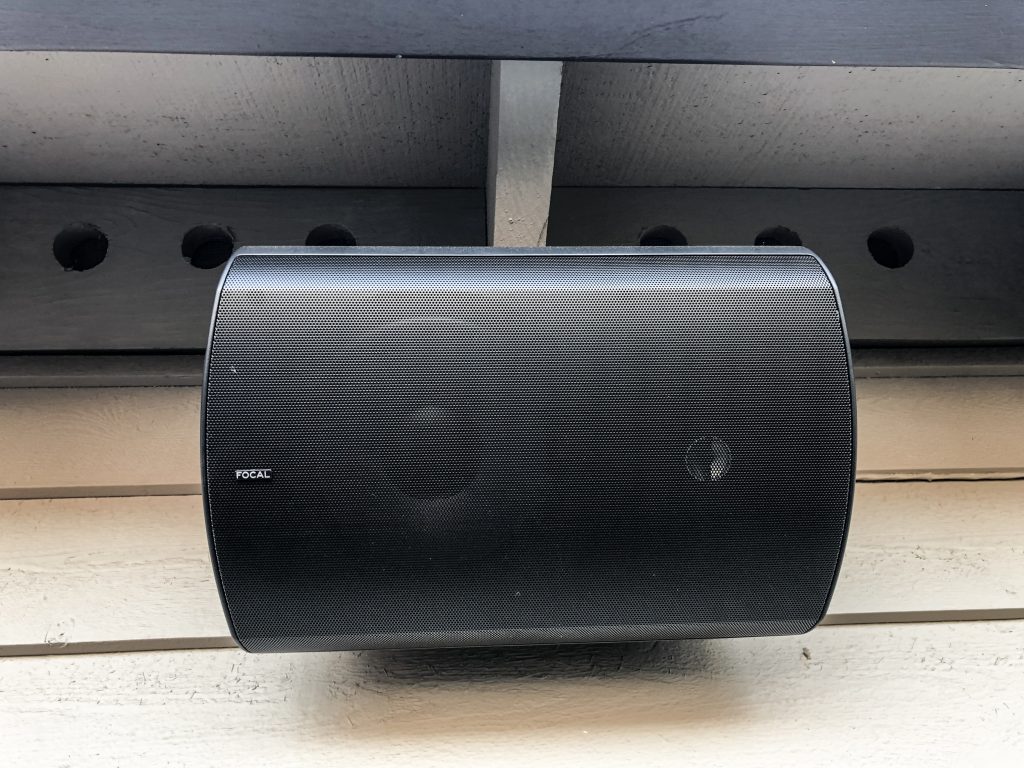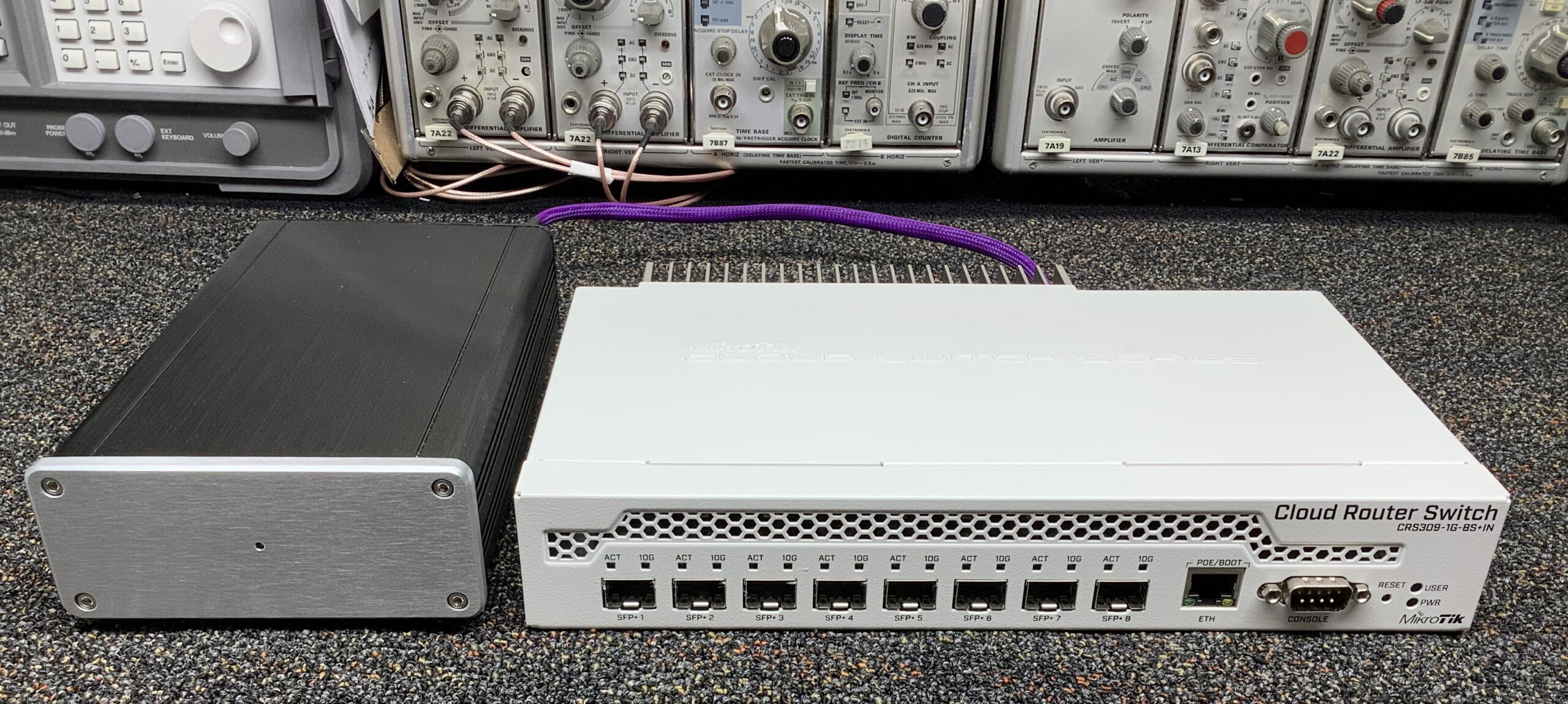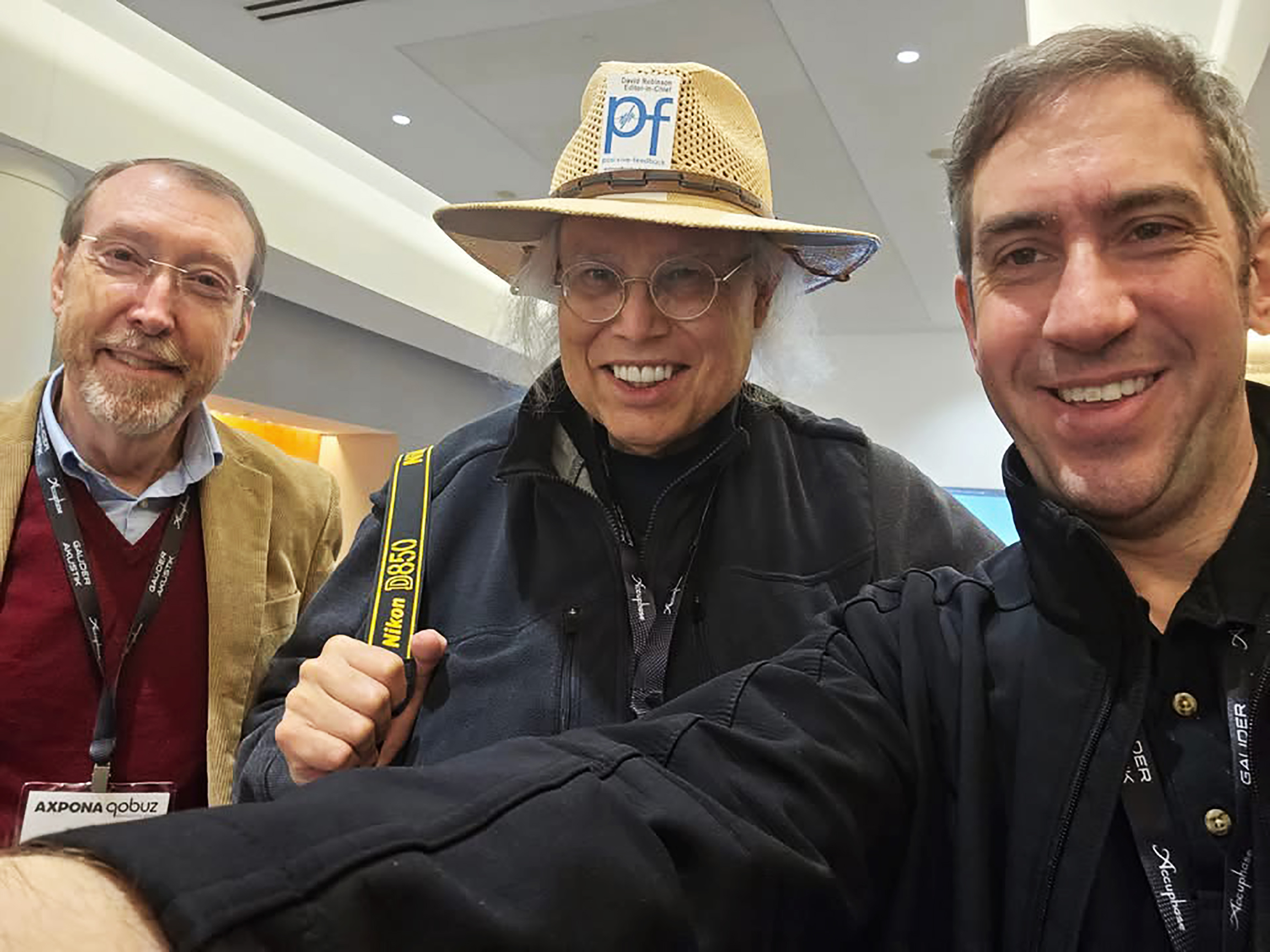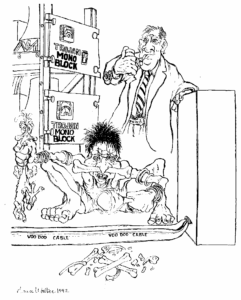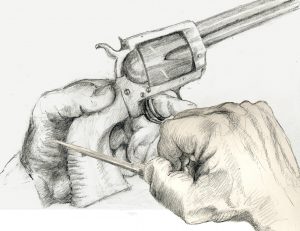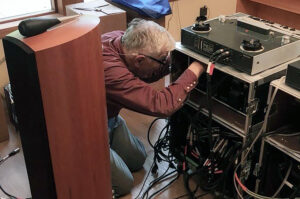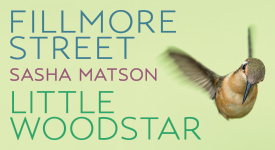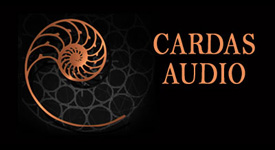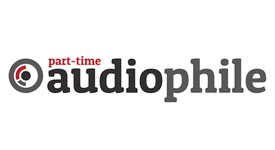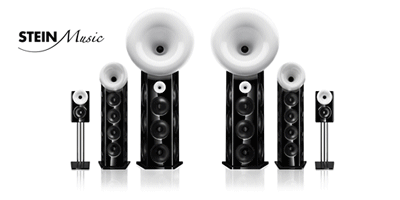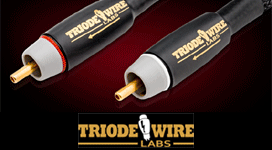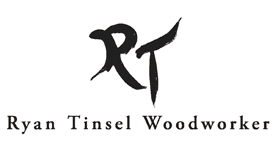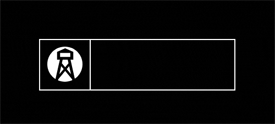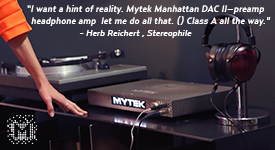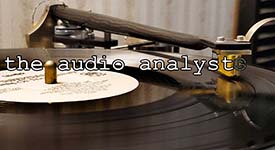Ye Olde Editor on his deck with the sun, a son, a cigar, Port, and some fine outdoor music, contemplating.... Happy Valley, OR, 2023 (Photograph by John Robinson; image processing by YOE himself.)
Passion is a long, deep road...often life-long.
You have your list; I have mine.
Among other fine audio passions—and they are many—is mine for reel-to-reel (RTR) tape machines and the often-great recordings that go with them. There is real romance here, outlasting most all of the women that I've ever known.
In fact, from the time that I was 15 years old, my fascination in RTR (which stretched back to the time that I first saw a friend's compact machine at the age of 10) grew stronger and stronger. I don't exactly know why. The combination of whirling wheels, sweeping tape, the controls, and the music was hypnotizing to me. I spent most of a year when I was 16 taking a part-time job, and doing odd jobs to earn enough money to buy the best consumer RTR that I could find. It turned out to be the Sony TC-630, a quarter-inch, quarter-track play/record machine that had 1 7/8", 3.75", and 7.5" speed options. The additional preamp/amp and fold-out speakers were bonuses to this budding audio and music lover.
That was the beginning for me. The TC-630 went with me to Brazil when I moved there for a year. I had added a four port solid state mixer, four Sony 1970 electret condenser mics, Koss Pro 4A headphones, some boom stands, and down the road I went.
During my senior year of high school in Sao Paulo, Brazil, 1971 (photographer unknown).
I was an amateur recordist, and did a lot of work with my jamming friends in California and Brazil. Not serious, but preparation for more serious work when I went to college at Lewis and Clark College in Portland, Oregon.
There I put in a couple of years at the college FM Stereo radio station, KLC. I headed up the location recording team, and did precisely timed (59:59) live recordings for the station. We had a vintage Metrotech RTR, an Ampex 4-channel tubed mixer, four unremembered mics (but certainly better than I was used to!), boom stands, and headphones.
That did it for me.
In the following years (70s-2024), especially after we started Positive Feedback in January of 1990, I would spend time with a number of RTR machines, mostly (but not all) of the prosumer variety. The Pioneer RT-707. Revox's B77 Mk. II. The Revox PR-99.
There was Arian Jansen's SonoruS RTR machine. Very fine, and compact (though heavy) too.
Arian Jansen with his SonoruS ATR 10 at a show, lo! these many years ago...
In my reference room of the time (2012), the United Home Audio Phase9 (center) and the SonoruS ATR-10, side by side....
The United Home Audio (UHA) Phase 9, was a revelation. I used it in conjunction with the Merging Technologies Horus to pull RTR directly to DSD256 via the darTZeel NHB 18NS preamp and very short, fine cables. The results? Spectacular. I still have these reel pulls to DSD128 and DSD256 in our DSD archives.
And my "blast from the past" tip of my hat to my college days, the Teac A3340S...how I had longed for that RTR and drooled on the audio dealer windows! Broke young college student, of course, who could only fantasize about buying it.
But now the old guy, not so broke, fulfilled the dream, and his debts to his youthful passion.
Just because I love that young man that I was....
On the professional/commercial side of things, the ATR Services Ampex ATR 102 (for five years, no less, as a long-term loan from Blue Light Audio).
The ATR Services Ampex ATR-102...I really miss it!
My audiobud Gus Skinas at Analog Productions with one of a string of Ampex ATR-102s...ready to make tapes and beautiful music over at Chad Kassem's Analogue Productions!
Still miss Michael Spitz, who passed away at the age of 59 back in 2013.
Michael Spitz: a portrait in fresco. THE Show 2011.
And then there's my old RTR audiobud Greg Beron of United Home Audio with one of his reference-level UHA custom rebuilds/mod-job machines....
And then there was my beautiful Mara MCI JH-110 with custom dual Flux Magnetics playback heads. All done to my custom specification. What a beautiful beast! Many thanks to Chris Mara and company for doing such a fabulous job.
The arrival of our Mara MCI JH-110 quarter-inch half-track commercial/professional recorder/playback. Lila Ritsema, PF Business Manager is in the middle, with Priestly Moving Company crew member Jeff Brown on the left, crew chief Robert Via, and crew member Zach Secreto on the right. Priestly Moving have been handling our large projects for years now.
So, this is a very long way around to say that there's been a long history of RTR love in my household.
Which leads me to the newest RTR adventure, and the subject of this evaluation-essay...
...the Analog Audio Design TP-1000. Advance warning: this is going to be a rave.
The Analog Audio Design TP-1000 RTR Player in action
I had run across the TP-1000 several times in Gary Koh's Genesis Technology room at the Pacific Audio Show, and also at AXPONA. I was moved by a sudden impulse to contact Brian Tucker of Pro Audio in Chicago and see if a review was possible.
Turned out that it was.
Specifications (from the AAD Website)
Mechanical
• Tape : 1/4 inch (6.35mm) Track Format : 2-track. 2 channel (DIN 0.106 inch, 2.7mm) Max. Reel Size : 11.8 inch (30 cm) Tape Speed : Switchable two speeds : 15 ips (38.1 cm/s) and 7.5 ips (19.05 cm/s) Tape Speed Accuracy : Within +/-0.05% Pitch Control Range : +/-100%, resolution of 0.01 ips Wow and Flutter : 15 ips = <0.045% peak, weigthed (DIN 45507), 7.5 ips = <0.09% peak, weighted (DIN 45507) Wind Speed : Switchable three speeds = 2 m/s, 6 m/s, 10 m/s Wind Speed Control : 1 m/s to 12 m/s, resolution of 1 m/s Capstan Motor : DC servo motor, belt drive Reel Motor : 2x DC motor, belt drive Dimensions (WxHxD) : 466mm x 519mm x 305mm Weight : 61.73 lbs (28 kg)
Electrical
• Power Supply : Connector = IEC 3-pole, Voltage Range = 90 to 264 VAC, Frequency Range = 47 to 63 Hz Power Consumption = 40 W maximum Input 1 : Connector = XLR, Level selectable = Balanced = +4dBu (in CAL), Unbalanced = -10dBV (in CAL) Input 2 : Connector = XLR (powered 48V) Level selectable = -60 dBV (in CAL), -40 dBV (in CAL) Output : Connector = XLR, Level selectable = Balanced = +4dBu (in CAL), Unbalanced = -10dBV (in CAL) Headphone Output : 1.5 W maximum (8 ohm load) Ethernet : RJ45 10/100Base-T for remote control and firmware update IR Input : Infrared remote control
Audio
• Equalization : NAB or IEC, switchable Reproduce Record Level : 320 nWb/m or 514 nWb/m, switchable Frequency Response : 15 ips = 30hz to 22kHz (+/-2 dB) at 0 VU , 7.5 ips = 30hz to 20kHz (+/-2 dB) at 0 VU Signal-To-Noise Ratio : (THD-N, in CAL) / A-Weighting = 15 ips = 71 dB / 78 dB, 7.5 ips = 70 dB / 77 dB Distortion : 0.8% or less at 1kHz, 15 ips Channel Crosstalk : 60 dB or more
Overall, the above are very respectable specs in a prosumer RTR.
Note that the TP-1000 is a playback-only unit. For those who want to record as well as playback both 15 IPS and 7.5 IPS tapes, AAD says that they will be releasing a full recorder version of the TP-1000, called the TR-1000, at some point in the future. (The promise is that this will be before the end of 2025. We'll see about that.) There is also a rare version that supports 30 IPS playback apparently, but you'd have to check with AAD about that.
But the far more important thing about the TP-1000 is that it represents a new movement towards from-the-ground-up completely fresh designs and contemporary engineering. There aren't many companies that are building new RTR from the ground up. Right off hand, Nagra, Revox, and Metaxas come to mind, but most RTR activity centers around rebuilding/upgrade classic machines, e.g., Studer, Ampex, and MCI.
Brian Tucker with the TP-1000 in operation at AXPONA 2025. The Playback Designs IPS-3 integrated amp with DAC is below...a very satisfying combination!
Instead of remanufacturing decades-old machines (nothing wrong with that, of course), Analog Audio Design has chosen to build a whole new RTR with exceptional performance, tight tolerances, modern drives and electronics, and a new control interface with remote that really knocked me out. In fact, it was the interface and control structure that first attracted my attention in Gary Koh's Genesis Technology room, with Brian Tucker shepherding the demos expertly, as always.
Brian Tucker with the AAD TP-1000 in the Genesis Technology room, Pacific Audio Fest 2023
The thing that is most striking to me about the TP-1000 is the uniqueness of the front layout. The left side looks reasonably recognizable, with analog VUs, input/output analog knobs, function indicator lights, spool and capstan speed knobs, headphone jack and monitor...all familiar elements.
But...then there's that rightside!
It's the touch screen system that made me really sit up and take notice the very first time that I saw it.
Most everything that a passionate RTR'er might want in a modern interface is there at your fingertips.
Speed? Check.
Tape reel size? Likewise.
But there's much more. Headphone muting; setting the reference level (either 514 nWb [Hi] or 320 nWb [Lo]; no 250 nWb setting, so possessors of The Tape Project tapes from many years ago...yes, me too...will have to adjust volume), and key items like EQ, settings, and so on. In fact, the new interface on the TP-1000 is so feature rich that the manual lists no less than 43(!) functions that can be handled from there. I have no intention of going over them all; some are obvious, while some are esoteric and of greater interest to the experienced/technical user.
Normally, I would refer you to a download link to snag a copy of the manual...almost all manufacturers have such...but AAD doesn't seem to have any support section stocked with the obvious resources.
For shame, AAD gents! Let's get with it.
But Brian Tucker of Pro Audio was able to get me the full TP-1000 manual with its 49 pages of rather dense content...a not inconsiderable task. Rather than attempting the voluminous task of covering all of the capabilities, some of which are rather esoteric, I refer the reader to the manual itself. The dozens of features are very well compiled in this document, something that it not always true.
The remote for the TP-1000 is a very solid piece of work, with key tape operations clearly delineated and accessible. This is an optional component, and must be specified at the point of sale or ordered separately afterwards.
Not only that, but the TP-1000 has both Ethernet connectivity (allows firmware updates) and can be browsed at its IP address to access its more extended control set via your smartphone's Web app. Handy, that, very handy...and a significant step forward in control interfaces for RTR.
I have to say that I loved working with this machine. It made tape playback a pleasure to do...every time.
Among the key tapes that I used with the TP-1000:
Of course, and as always. One of my forever reference recordings, wonderful in every way. The TP-1000 performed flawlessly, and silently in its mechanics. Most satisfying.
Likewise a longtime favorite of mine. A brilliant pair of compositions by one of my very favorite 20th century composers. An exceptional performance by Reiner and the CSO, produced and recorded by the RCA LS team. I could not tell you how many times I have listened to this, in every format...except CD. (No loss.) Again, the TP-1000 killed it (in a good way!).
Every time that I listen to Scheherazade, I think of my dear friend, now departed, Lloyd Walker of Walker Audio. We were very close, and every time that he and Fred visited we would listen to this album again and again. (In return, I introduced him to Respighi. We're even, I reckon.) As it stands, I own one of only four Walker Master Reference turntables on the planet, fitted with a Soundstream Hyperion Two personally selected for me by my audio friend Peter Lederman.
And just like that, another reverie appears.
One again, the TP-1000 showed itself to be performing at a world-class, top-notch level. Dynamics were handled with aplomb, and the sheer musical beauty of Rimsky-K shone through in a way that reminds the listener why RTR tape is so very glorious.
If nothing else, recalibrate your hearing any time that you can hear a fine RTR rig.
Audio ignorance is not a virtue.
Coltrane for the home run! I've listened to this time and time again, and heard and felt different things each time.
Listening to fine music is always an existential flux...for the better if you pay attention; for the worse if you treat the experience as sonic wallpaper.
No need to comment on this title/recording. Chad Kassem's Analogue Productions has taken a stellar and unique recording, and brought it to us in crystalline fashion. The TP-1000 revealed the nuances of Coltrane's performance and the recording thereof, and was effortless in its recovery and rendition of this tape. What a pleasure to listen!
Yep. Had to get at least one Horch House (now owned by Revox) tape in the mix. Yello's Stella was a recording that I knew a cut or two from out of the '80s, but hadn't really dug into the full album. While at PAF 2024, I saw Brian Tucker with the TP-1000 in his Pro Audio space in Gary Koh's Genesis room. As usual, the RTR machines drew me over. I learned that Brian was handling Horch House tapes. I picked up a couple (Yello and Suzanne Vega) for our reference library here. (Note that Brian can assist you to purchase Revox Horch House tapes; contact him at his email listed below.)
I'm glad that I did. There was more to Stella than I knew. Moody, melodic, heavy rhythm – naturally – and great dynamics. The tape is a pleasure to listen to. "Oh Yeah" immediately brought Ferris Bueller's Day Off front and center. Deep voice...deeper than I remember...and tons of fun to hear at such a high level of quality. The Horch House tape is by far the best that I've ever heard this album sound. Yes, definitely a mid-'80s record, sounding like a lot of the musical culture of pop/rock at the time, but I'm very eclectic...I liked it very much on the TP-1000.
I even had one of my classic The Tape Project sampler tapes that I tried. (I have others.) The company, a partnership of Dan "Doc B." Schmalle and Lower output...250nWb...so you have to be at the TP-1000's 320nWb setting...but just turn up the volume on the Audionet Stern preamp, and it sounded crushingly good. I really do miss The Tape Project, but the last that I saw, their catalog was limited, with a number of titles out of stock. I should call and talk to Paul Stubblebine again...
Doc B. in his Washington studio with one of The Tape Project tapes, 2012
Doc B.'s rare Nagra T RTR...sounded great back when!
I could go on, but my unobtainium tapes and "other sources" are not on the table to discuss. I use them to help triangulate the sound of a particular RTR machine. All are significant or very interesting high-quality titles.
Certainly there was a critical mass of tapes here.
Conclusion
So much for all of that.
It always comes down to "How does it sound?"
In a word, spectacular! Classic RTR functions, but absolutely modern state-of-the-art controls with remote (optional) and smartphone app. Ethernet! Firmware!
All functions worked positively, quietly, and smoothly, providing a whisper-quiet playback system. Every one of our reference tapes here at Positive Feedback were played back with an ease of operation and a quality of sound that made the glories of reference-level 10.5" half-track tape at 15 IPS quite manifest.
Among the RTR machines that I've listened to over the decades, I would have to put the Analog Audio Design TP-1000 in my personal "top o' the heap" for this category. The Mara MCI JH-110; the ATR services Ampex ATR 102; United Home Audio series Tascam RTR machines...that's rarified company.
So...I'm compelled to give the Analog Audio Design TP-1000 Playback RTR machine one of my Brutus Awards for 2025. It represents a completely new generation of state-of-the-art RTR decks.
And I do so with all of my heart.
By the way, remember that the record/playback version of the TP-1000, the TR-1000, is now supposed to be available, although I do not know the current price. Check with Brian Tucker of Pro Audio for that info (if in North America), or with Analog Audio Design at the email address below if you live elsewhere.
Retail: $35,000 (due to Trump tariffs; this may lower in the future)
Manufacturer
Analog Audio Design
48 Bis Route de Trébeurden, 22560 Pleumeur-Bodou
+33 6 64 93 83 84
US Distributor
Brian Tucker
Pro Audio Ltd.
1.847.526.1660

